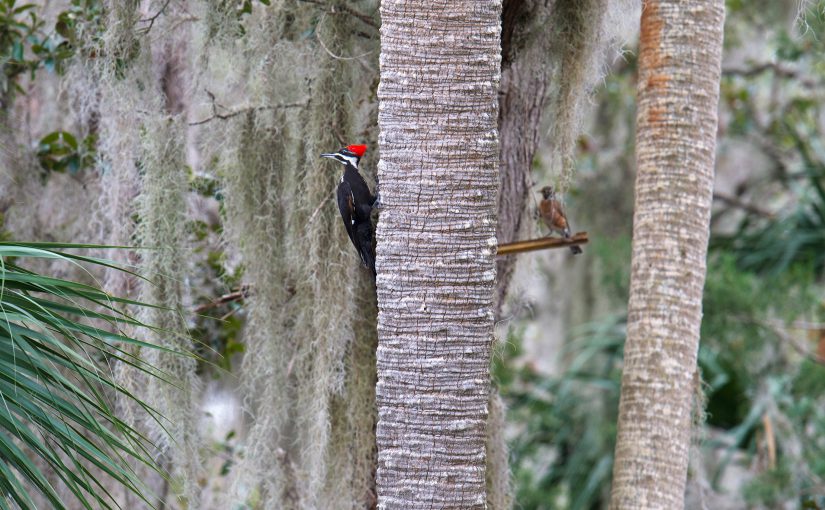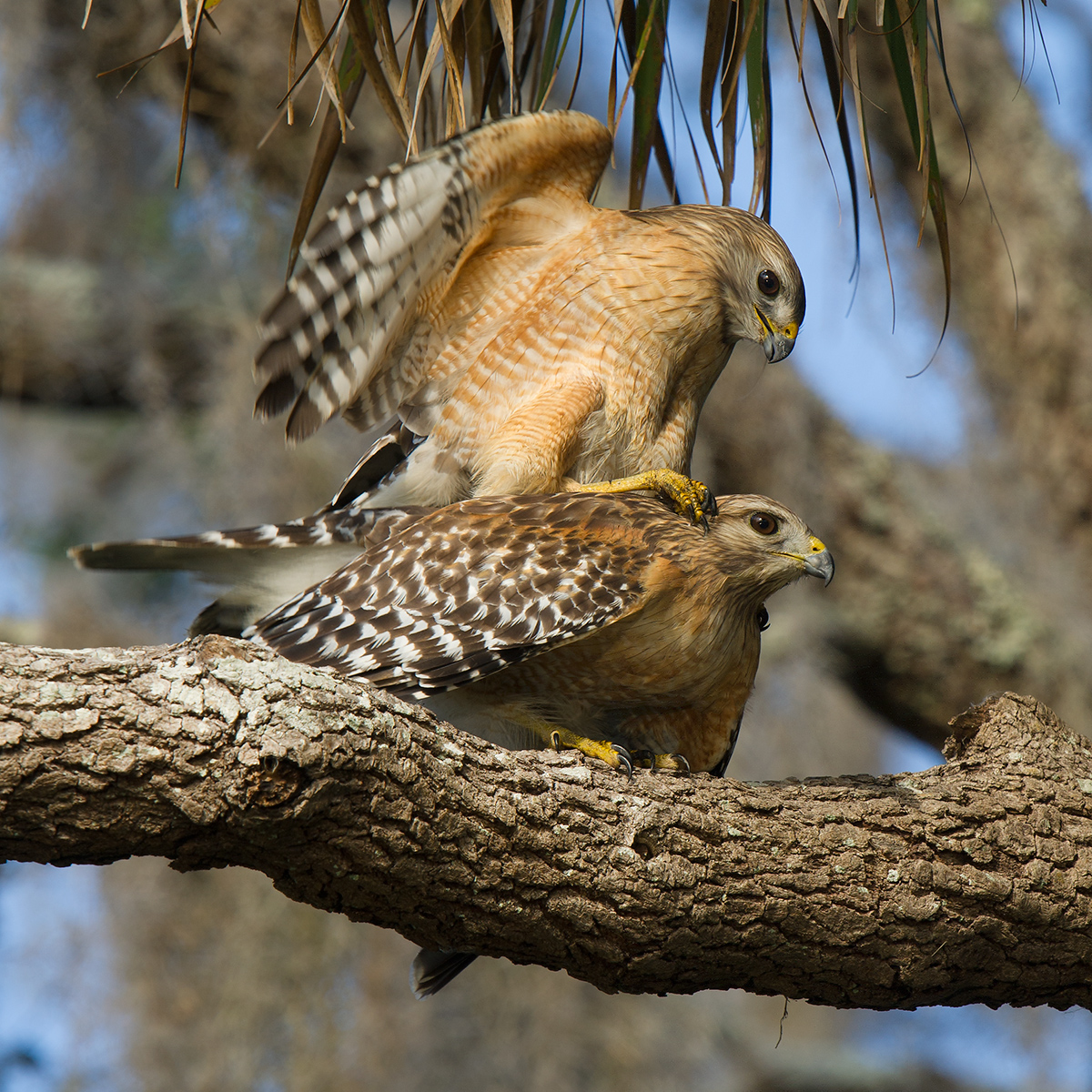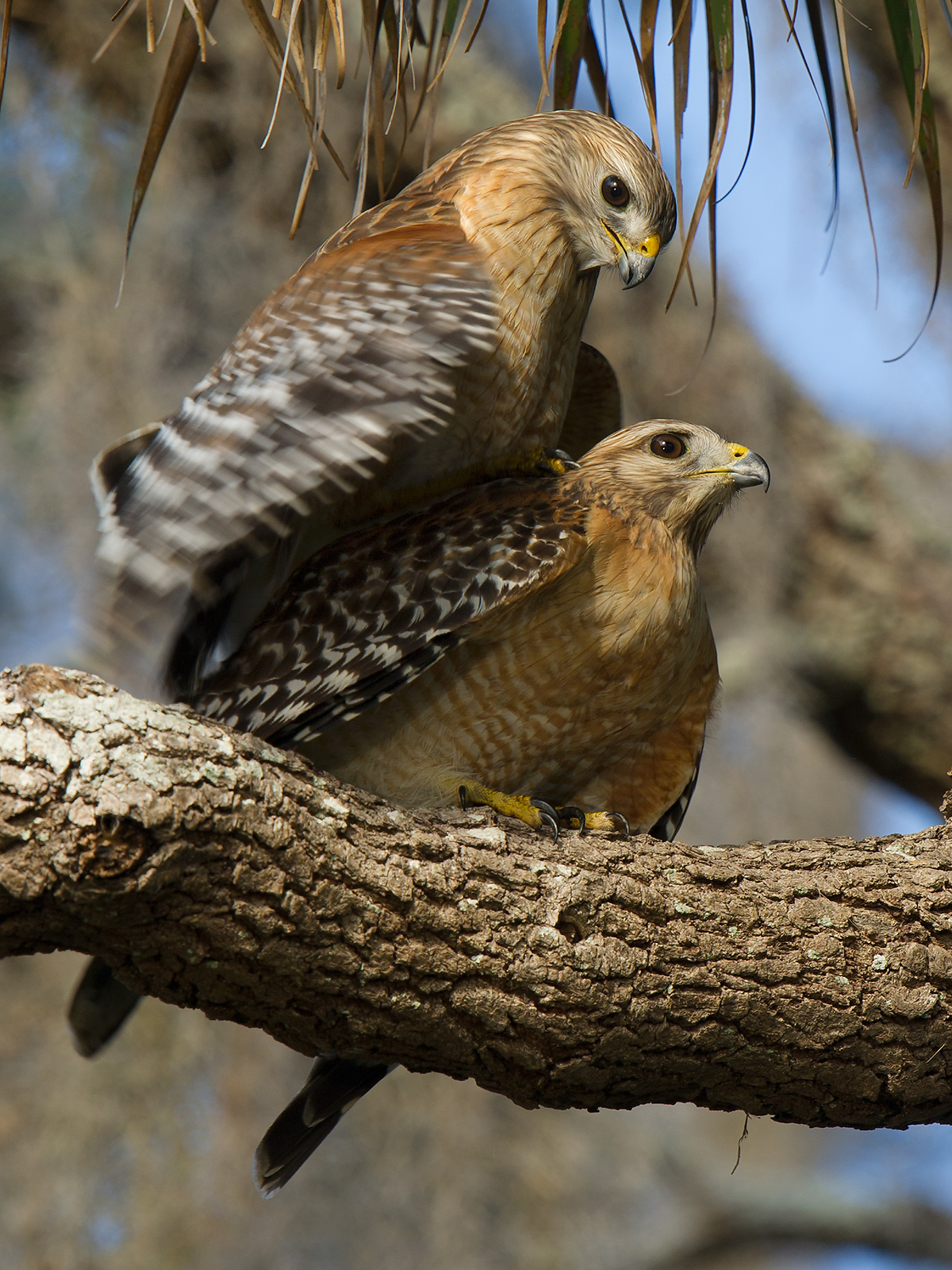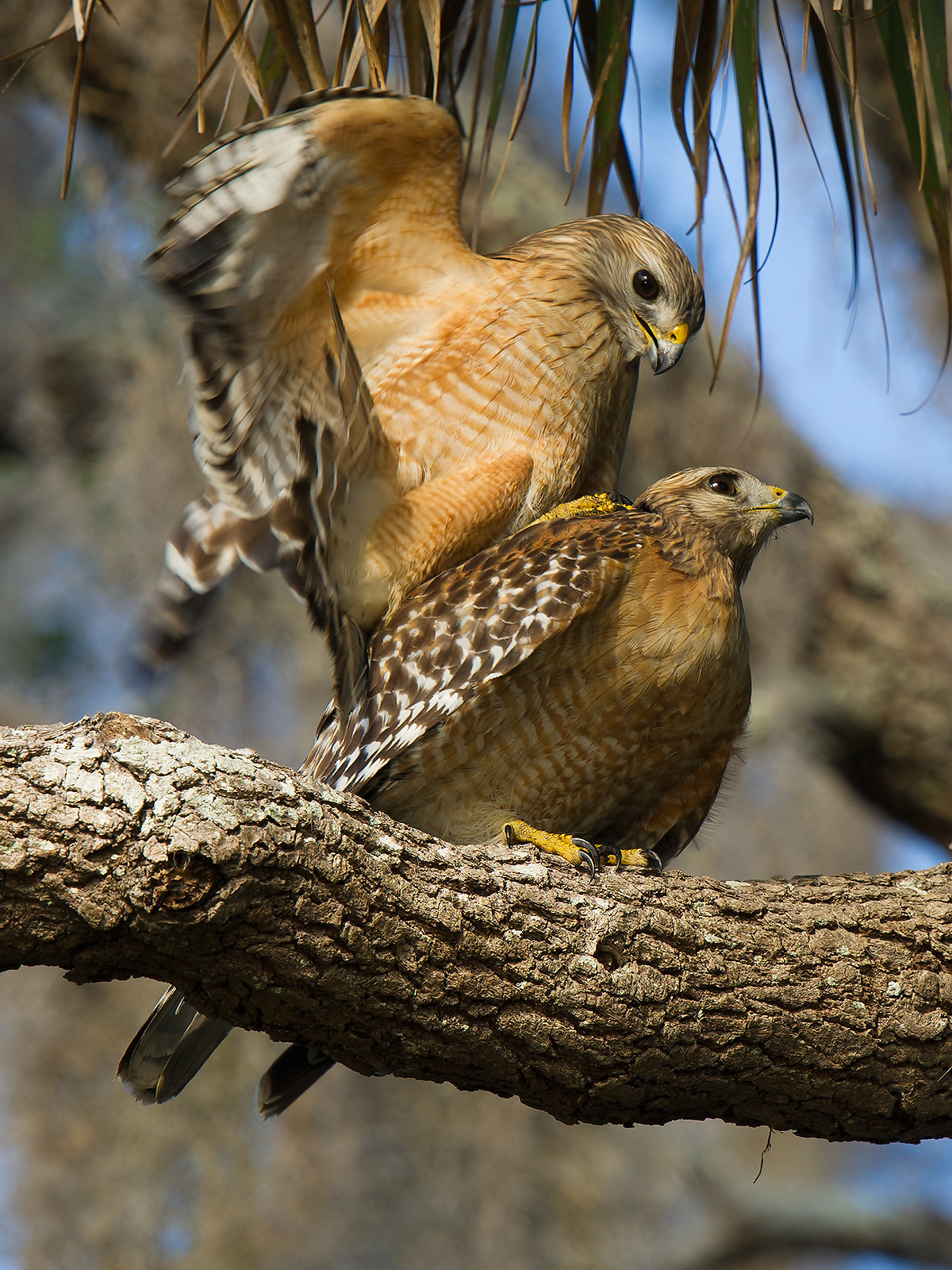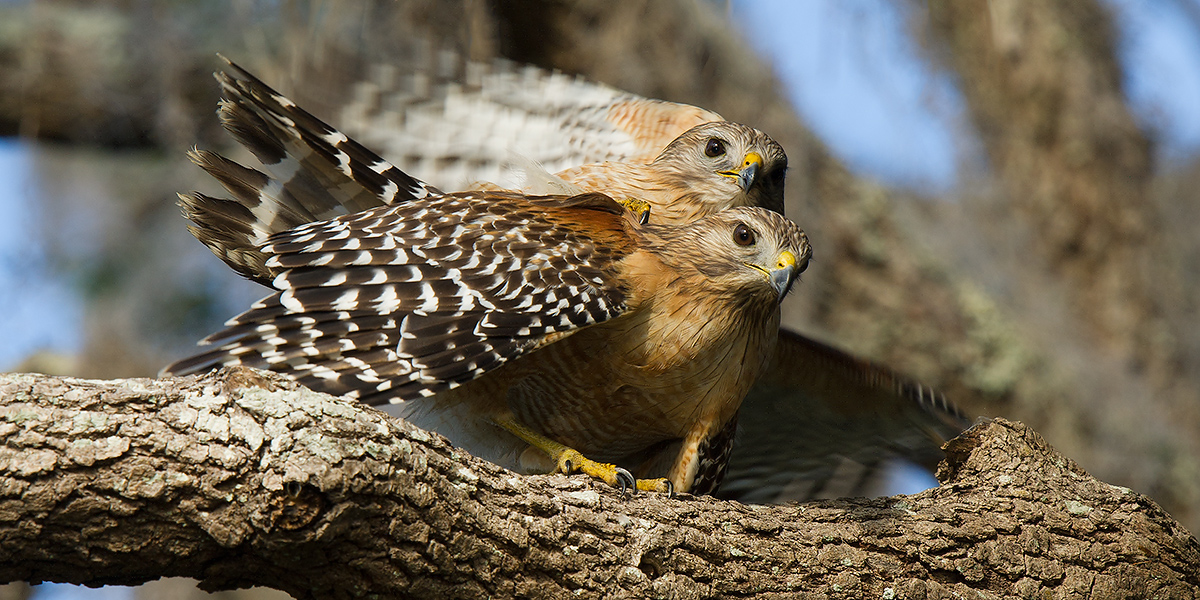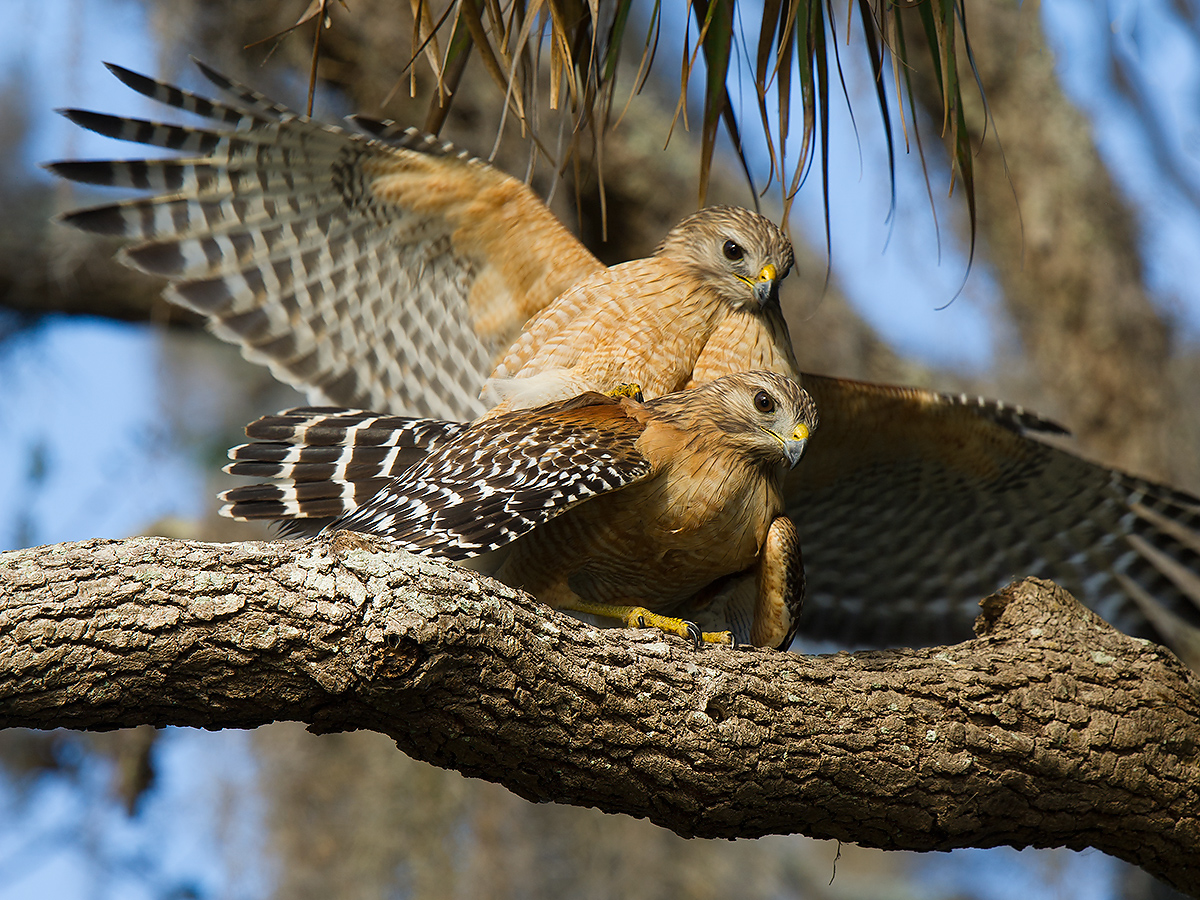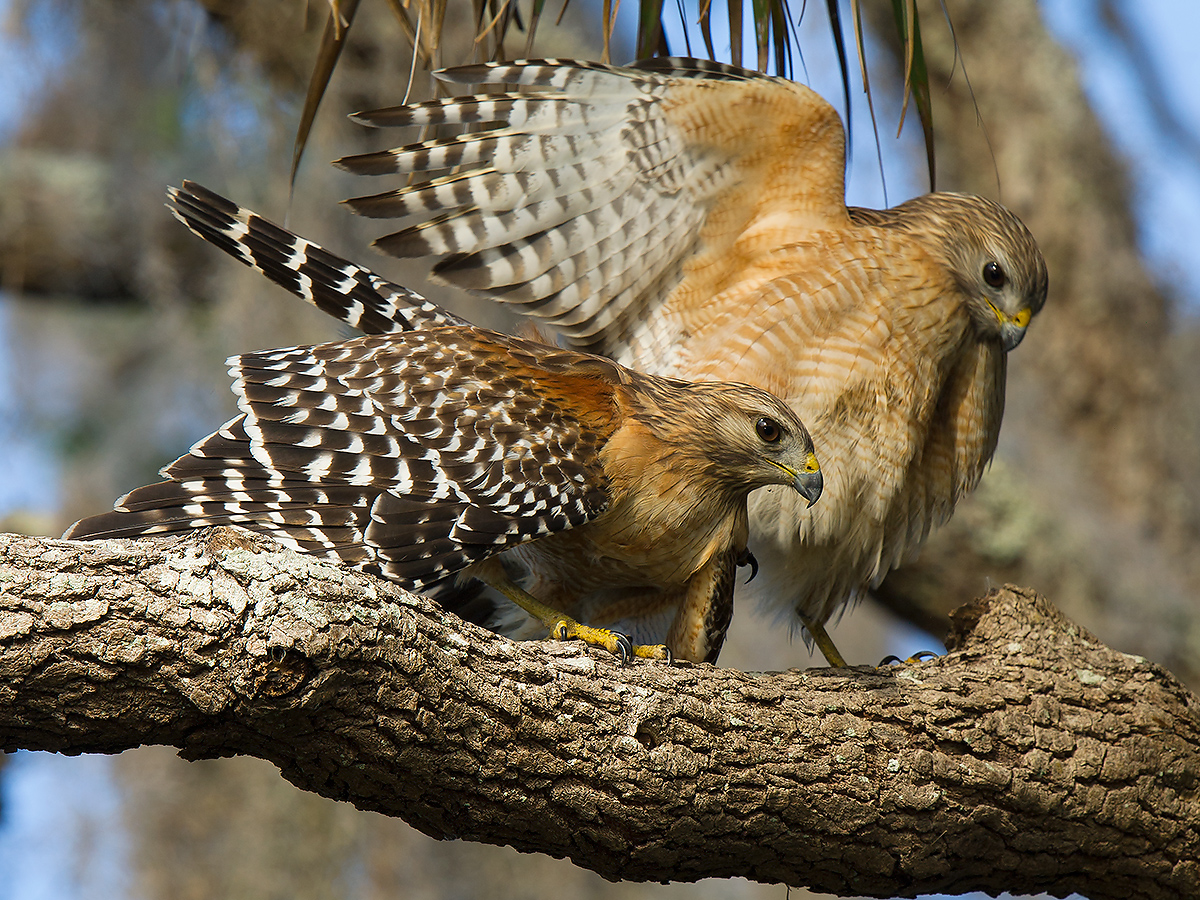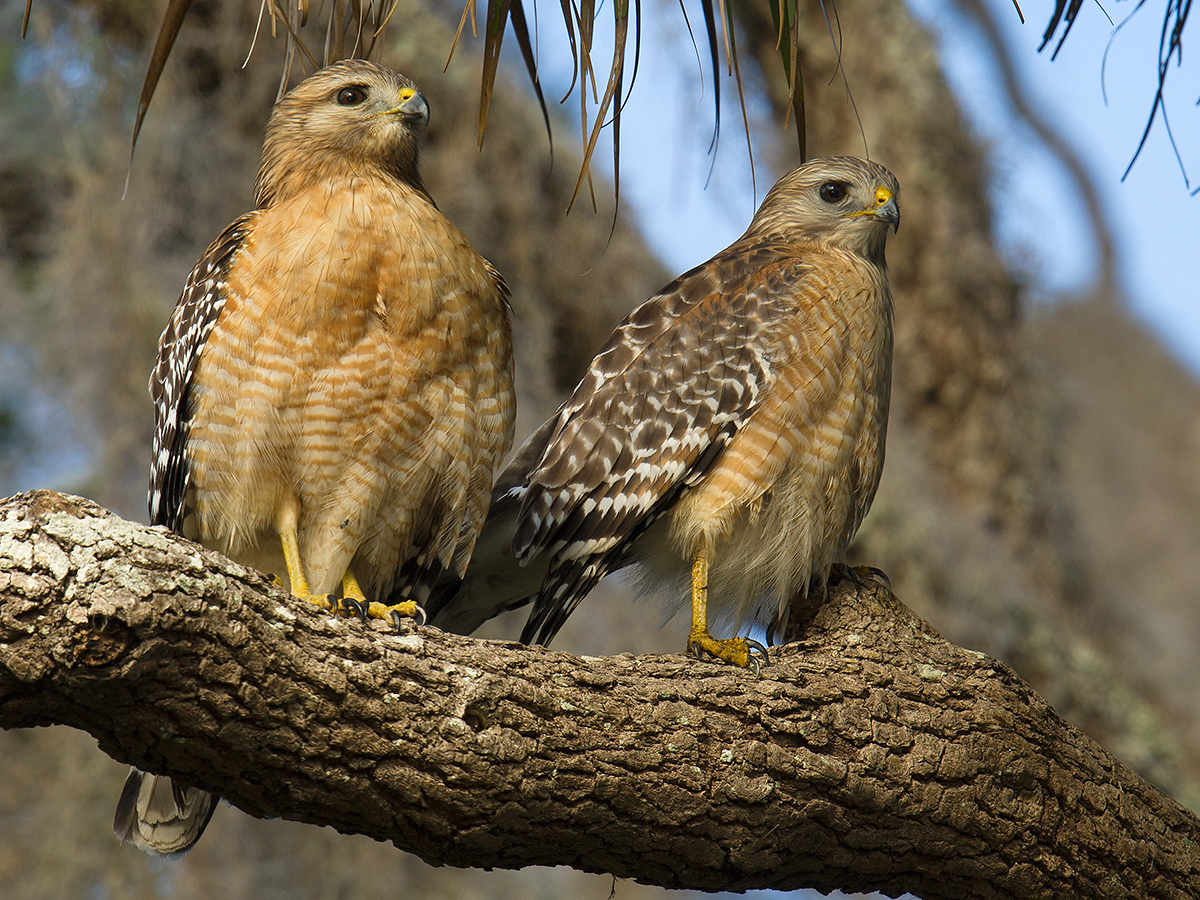In the photo above, Pileated Woodpecker Dryocopus pileatus pauses while feeding in a “hammock” or stand of trees. American Robin Turdus migratorius is visible in the background. The photo is from Gemini Springs Park in Volusia County, Florida and was taken on 22 Jan. 2017. This post is the first in a two-part series about my recent experiences birding in Florida. For Part 2, click here.
by Craig Brelsford
Founder, shanghaibirding.com
Greetings from the United States! On 19 Jan. Elaine Du and I arrived at my parents’ home in Florida. Birding began immediately, with good records such as Sandhill Crane coming from my parents’ very own front yard. The Sunshine State may be the best state in the USA for birding, and it is particularly good in winter. In this post, I will give you an introduction to birding in central Florida.
Where Are We?
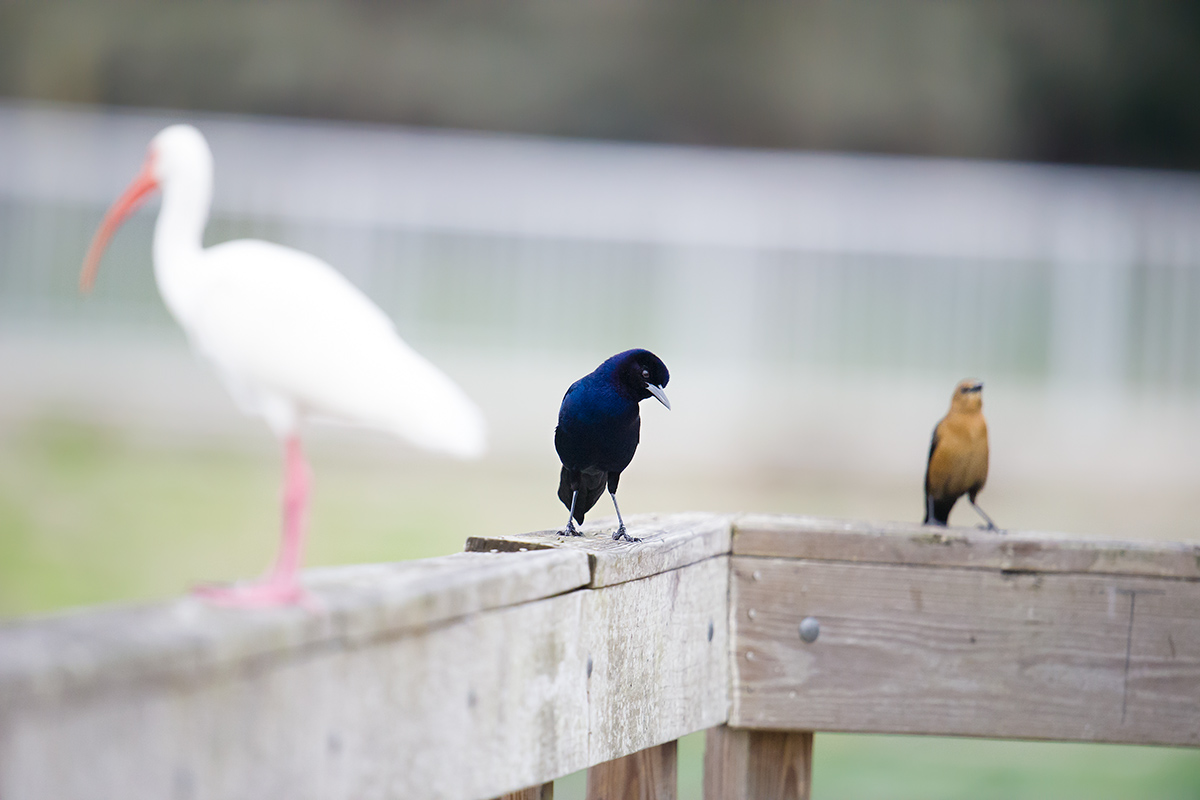
Elaine and I are in Debary, a town in Volusia County, near Orlando, 50 km (30 miles) inland from the Atlantic Ocean. We are at about 29 degrees north latitude at a point 262 km (163 miles) south of the parallel that runs through People’s Square in Shanghai.
Because Elaine and I have not seen my parents in two years, much of my time has been spent with family. We have visited only two nature reserves, but they are good ones: Gemini Springs Park and Lake Woodruff National Wildlife Refuge. The former is 7 km from my parents’ home; the latter, 31 km.
What Can a non-American Birder Learn in Florida?
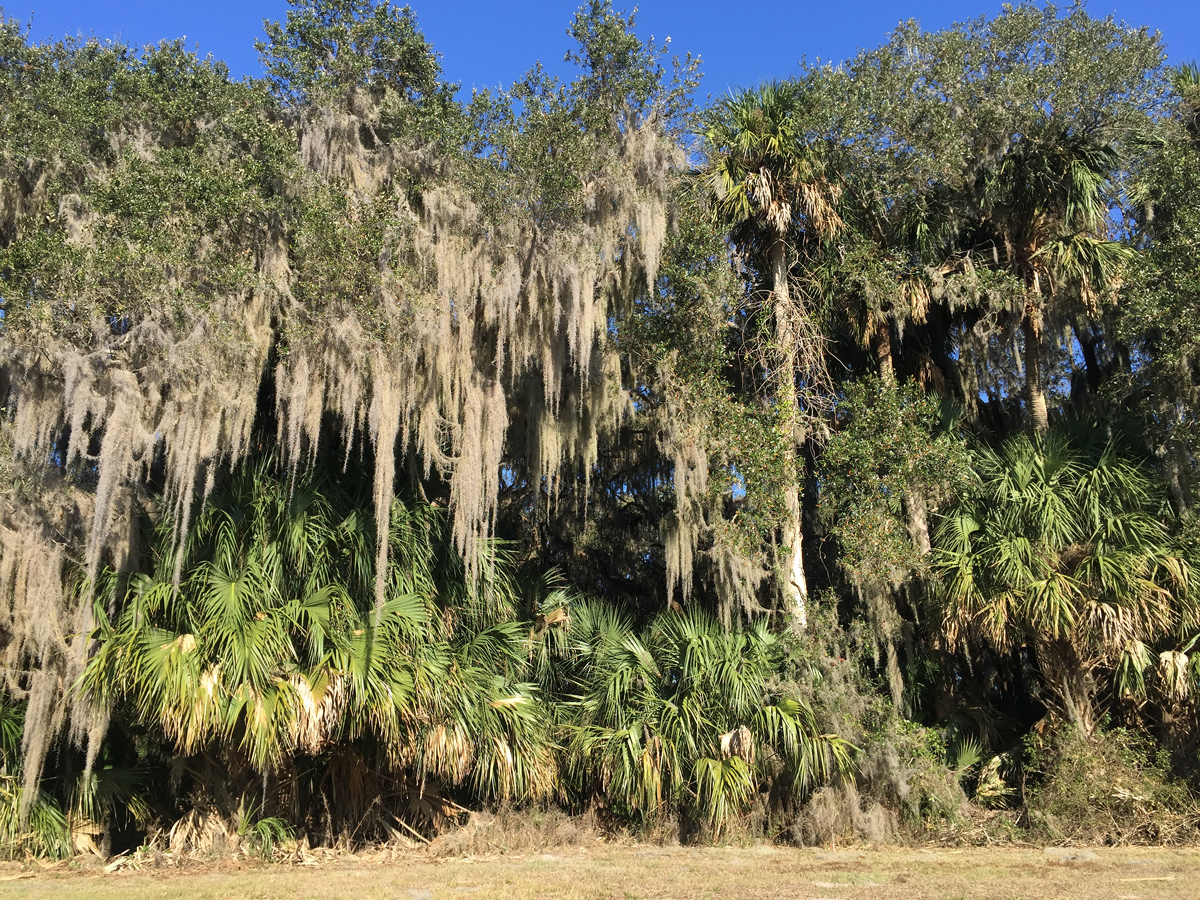
Birders who do most of their birding in China will find many differences in the avifauna of Florida. Entire families, such as the wood warblers (Parulidae), would be new to the first-time birder in the New World. Other families such as Troglodytidae (wrens) and Vireonidae (vireos) would be vaguely familiar. Still other families such as Accipitridae (hawks) and Strigidae (owls) are well-represented in both the Old World and New.
Here are some of the families I have noted recently in Volusia County:
Ciconiidae (Storks)
Wood Stork is the only stork that breeds in the United States. I note it regularly around Debary.
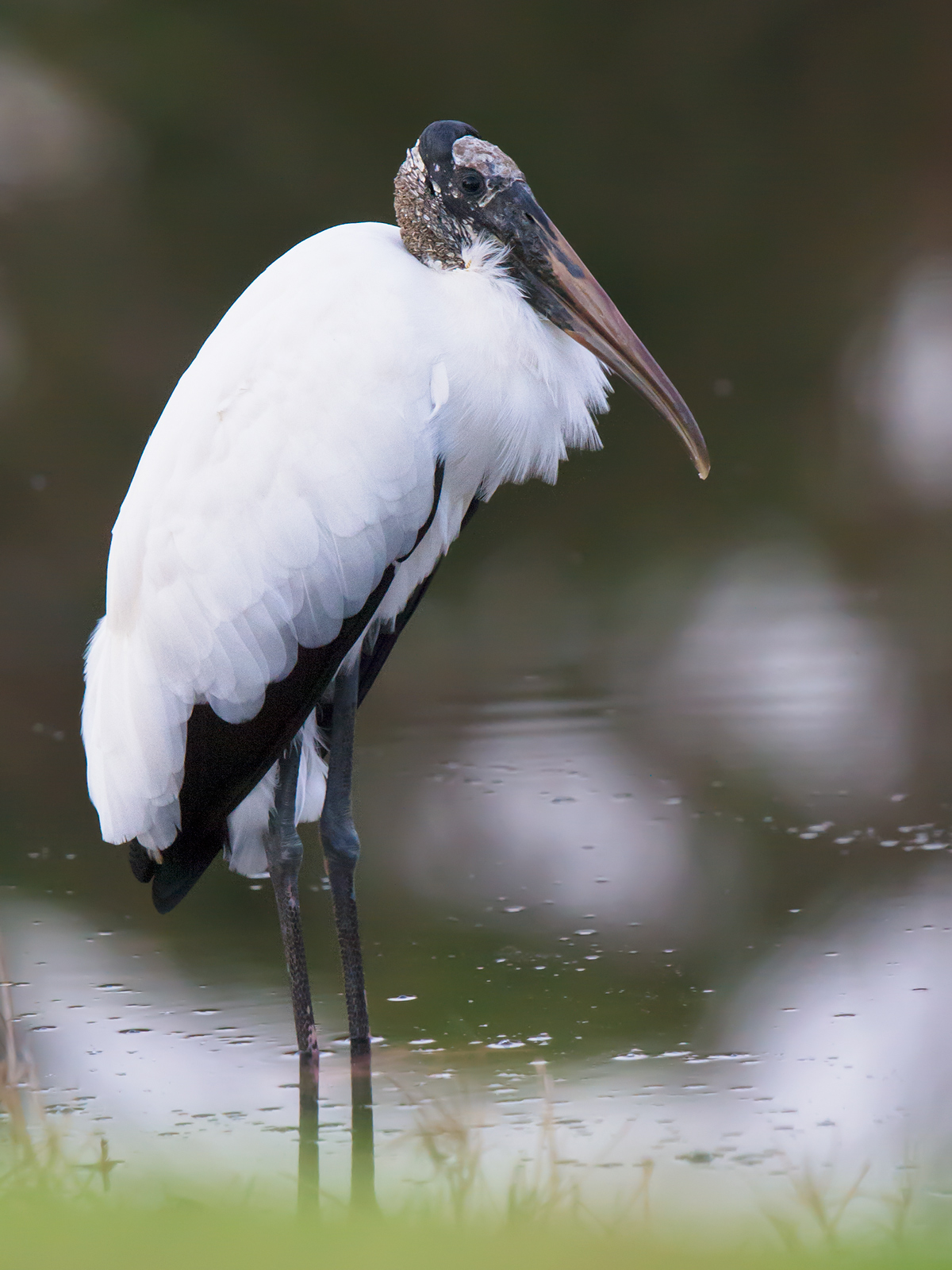
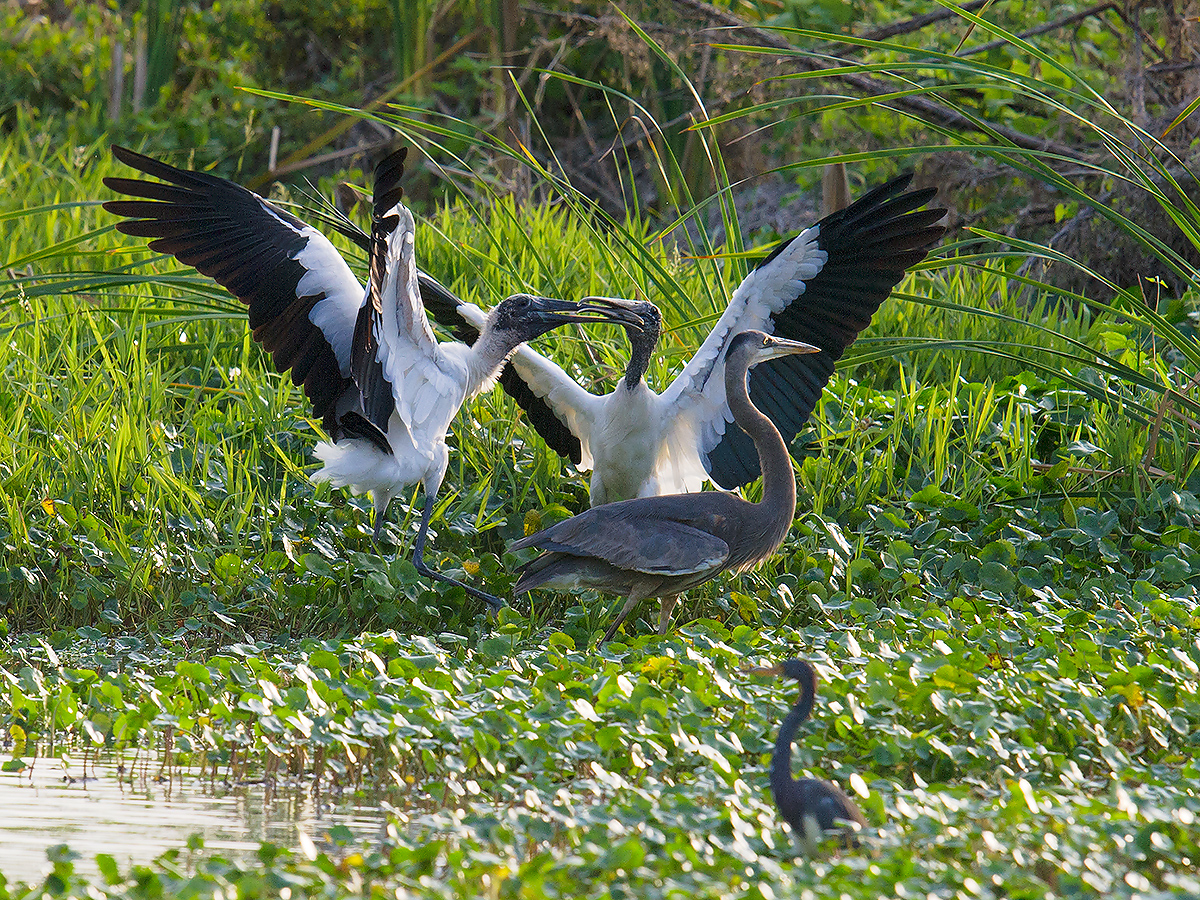
Cathartidae (New World Vultures)
One of the most widespread of New World vultures is Black Vulture Coragyps atratus. Like Old World vultures, Black Vulture finds carrion by sight, and it lacks feathers on its face, crown, and throat. The birds are very tame and approached me when I lay on the ground for these closeups.
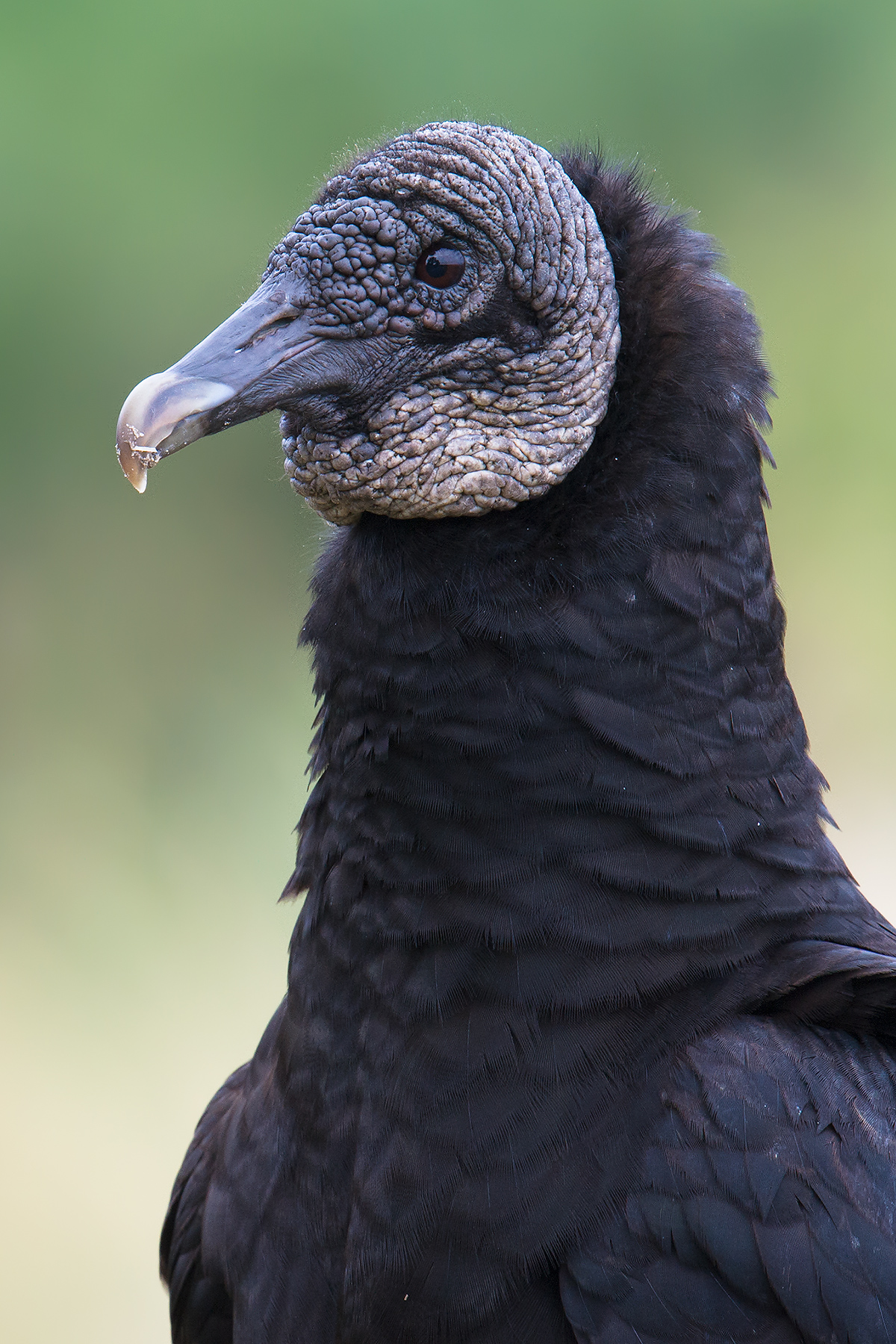
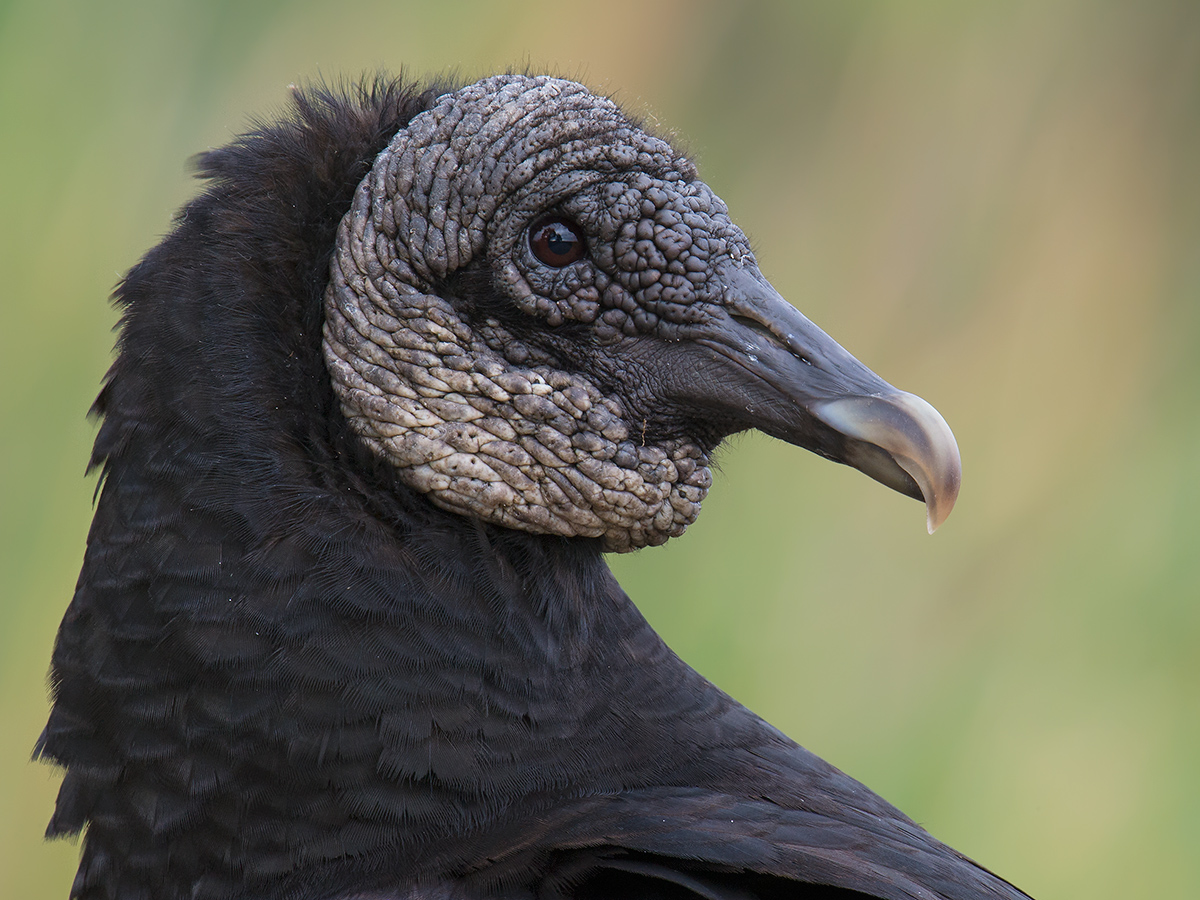
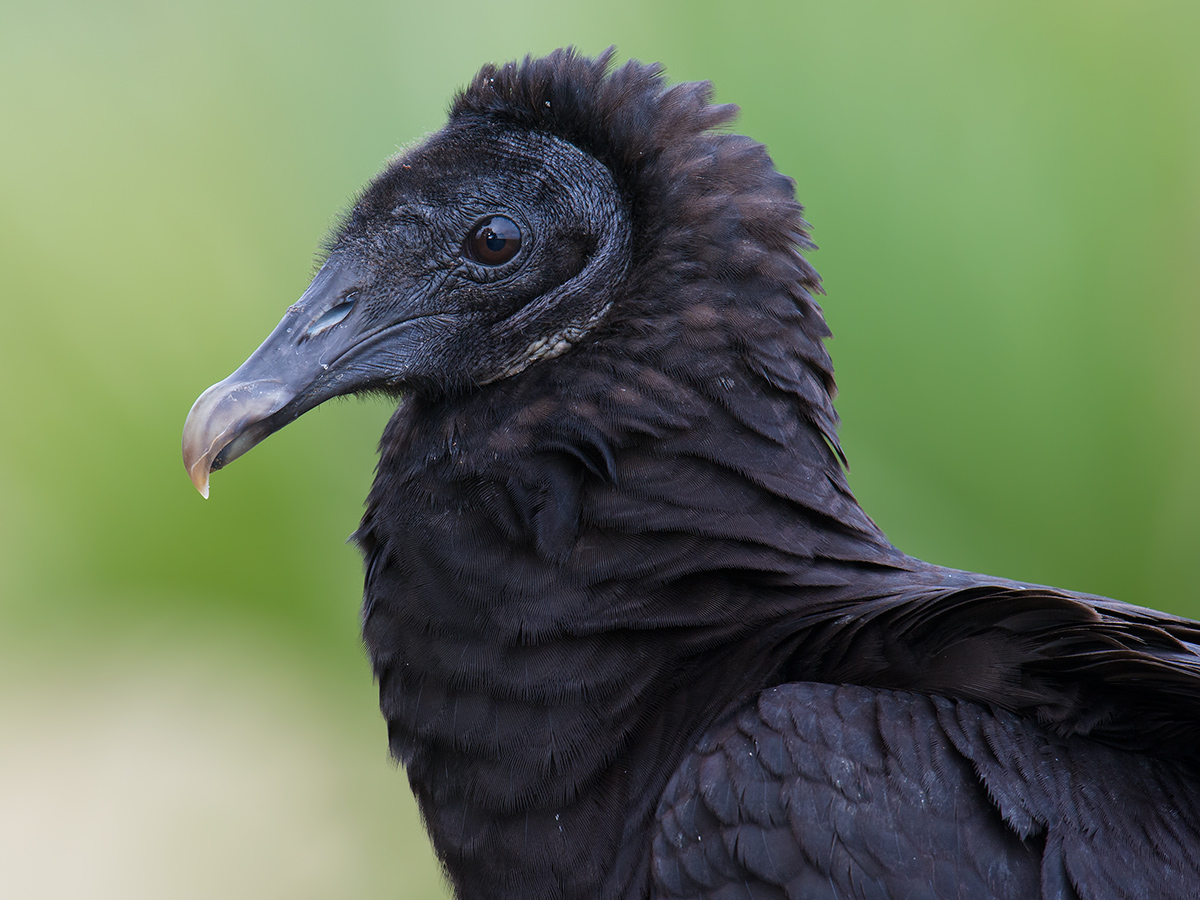
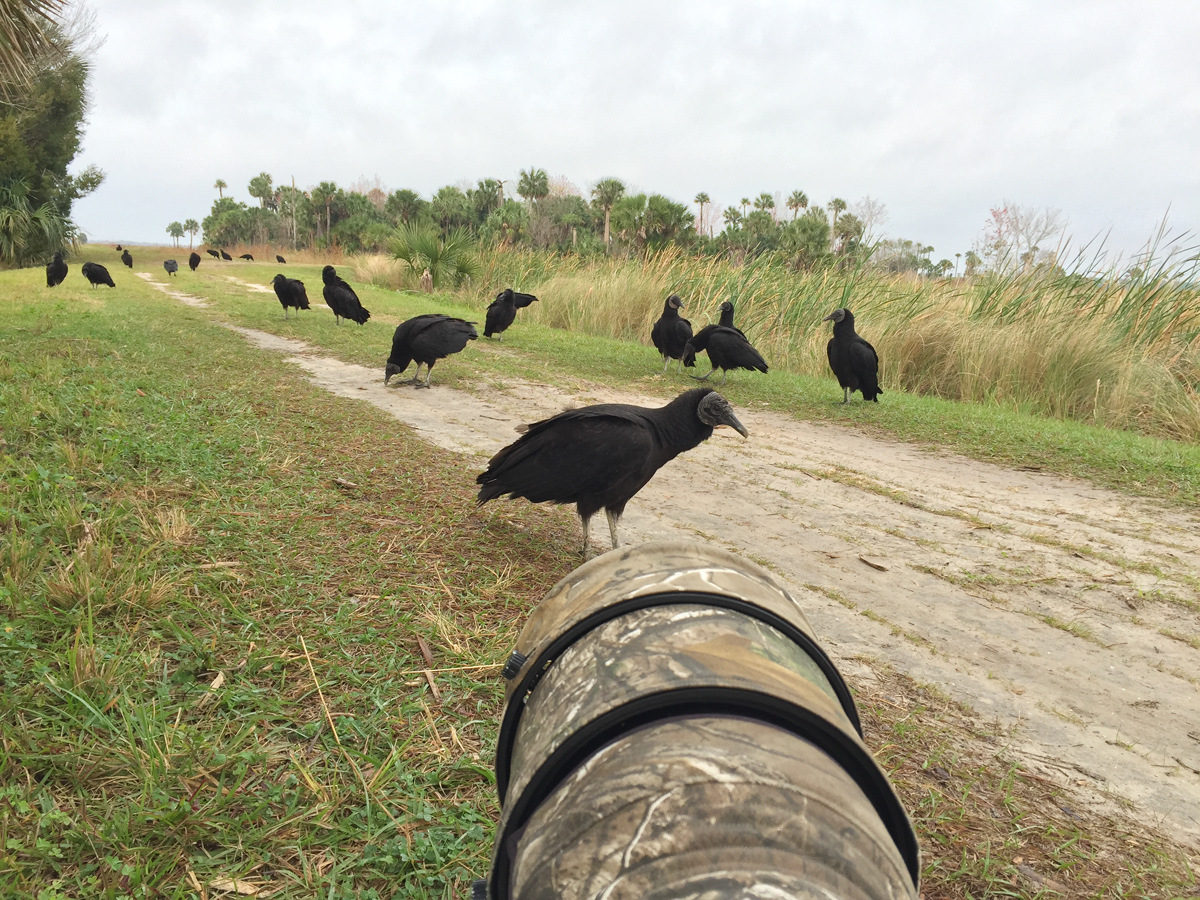
Pandionidae (Ospreys)
In some cases, China and America share birds not only of the same family or genus, but also of the same species. Western Osprey Pandion haliaetus is common in Shanghai as well as in the wetlands of Volusia County.
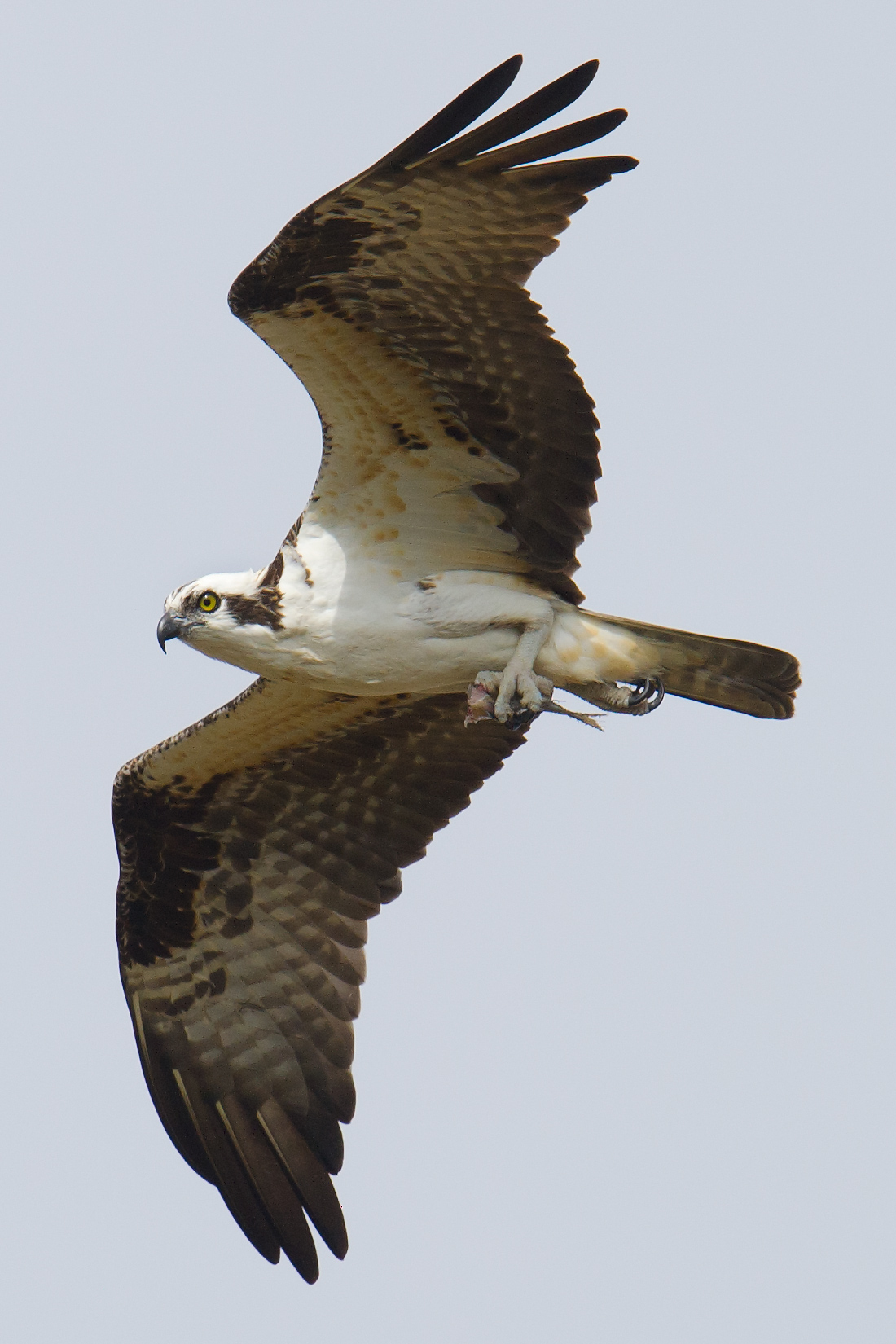
Accipitridae (Kites, Hawks, and Eagles)
A common forest hawk of the eastern United States, Red-shouldered Hawk Buteo lineatus is in the same genus as Shanghai’s Eastern Buzzard B. japonicus. On 27 Jan. at Gemini Springs Park, I photographed a pair mating.
America’s Northern Harrier Circus hudsonius is immediately familiar to China-based birders. It is similar to, and was once considered conspecific with, Hen Harrier C. cyaneus.
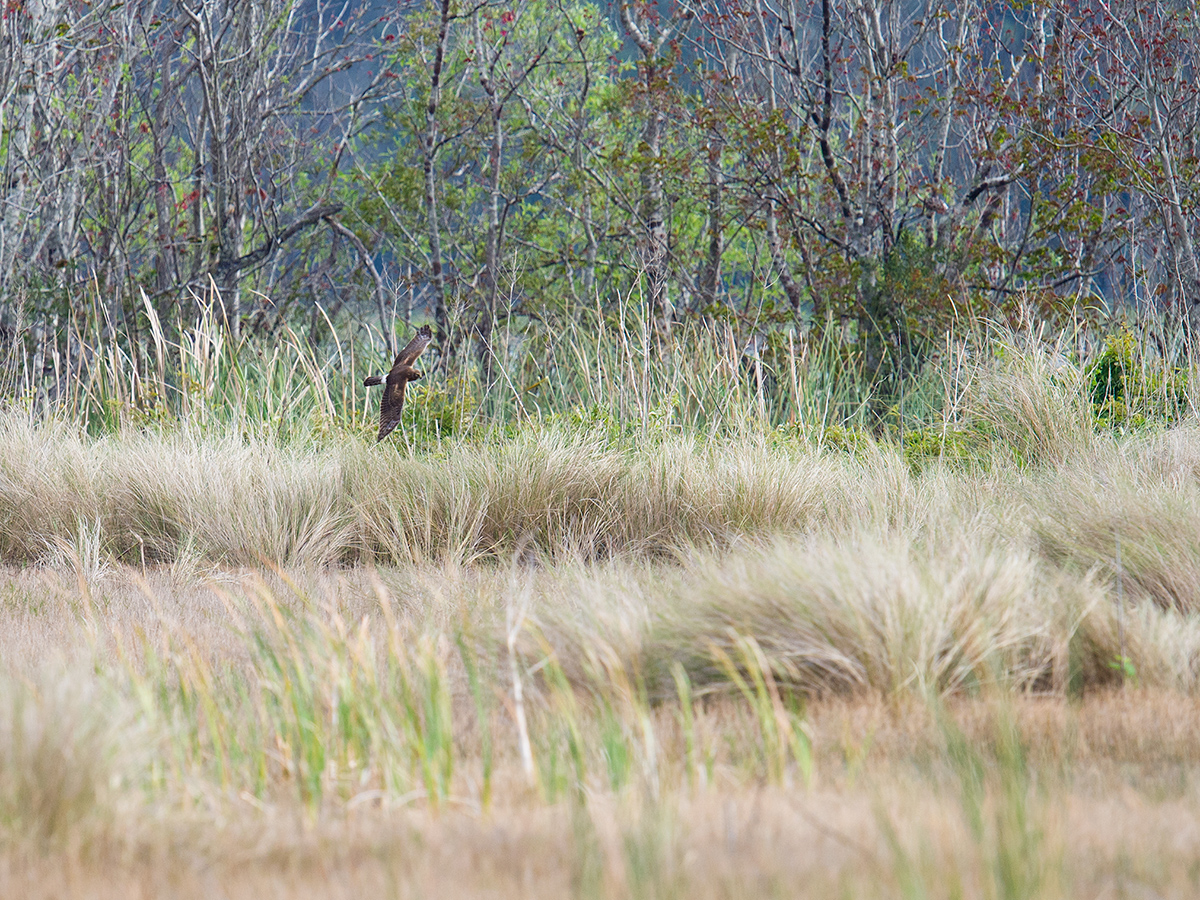
Rallidae (Rails)
Shanghai has Brown-cheeked Rail Rallus indicus; Florida offers King Rail R. elegans. I found a pair at Lake Woodruff National Wildlife Refuge. All rails are hard, and a good view such as this one is an experience to be treasured.
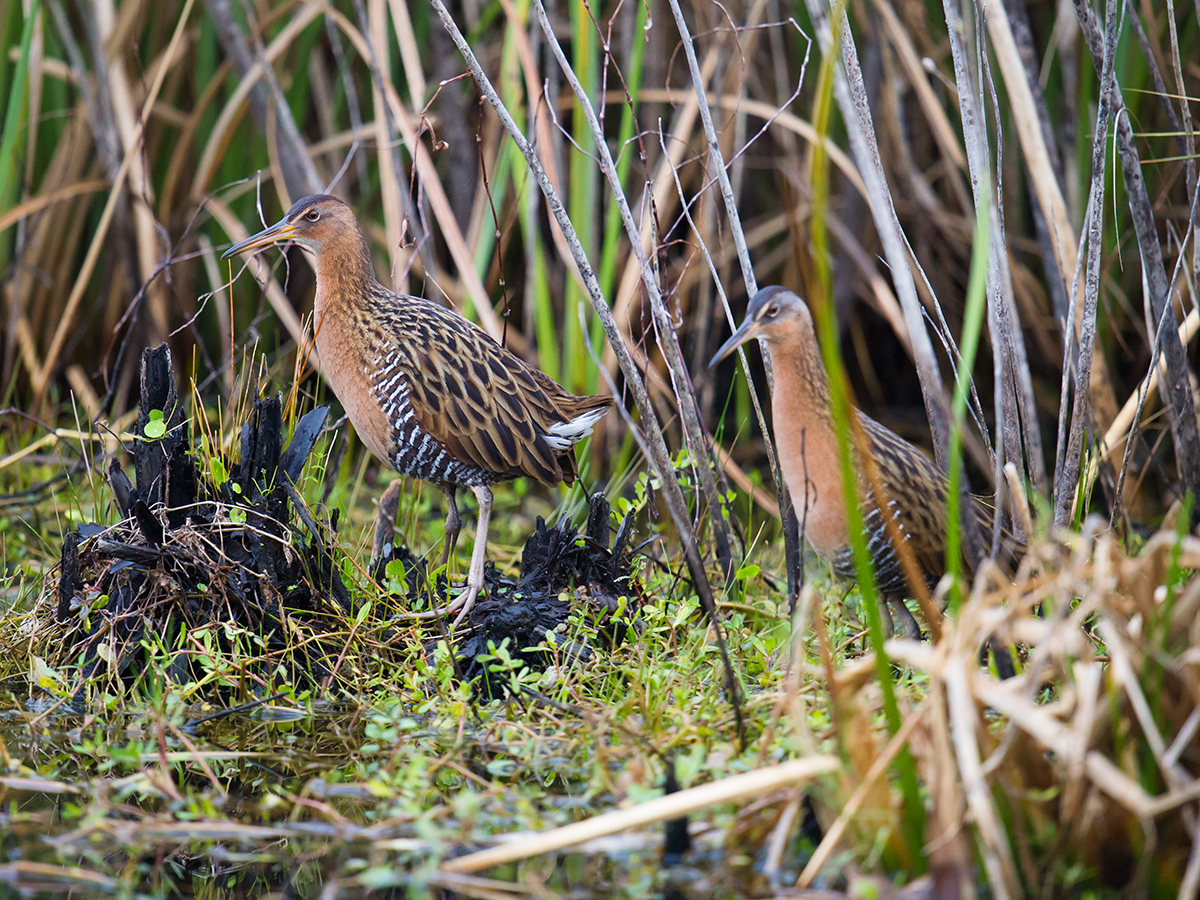
Gruidae (Cranes)
Volusia County is home to Florida Sandhill Crane Grus canadensis pratensis. The cranes are a non-migratory population, and as suburbia has grown up around them, the cranes have not only adapted, but flourished. Here is a group outside my parents’ home in Debary, photographed through the window of my car.
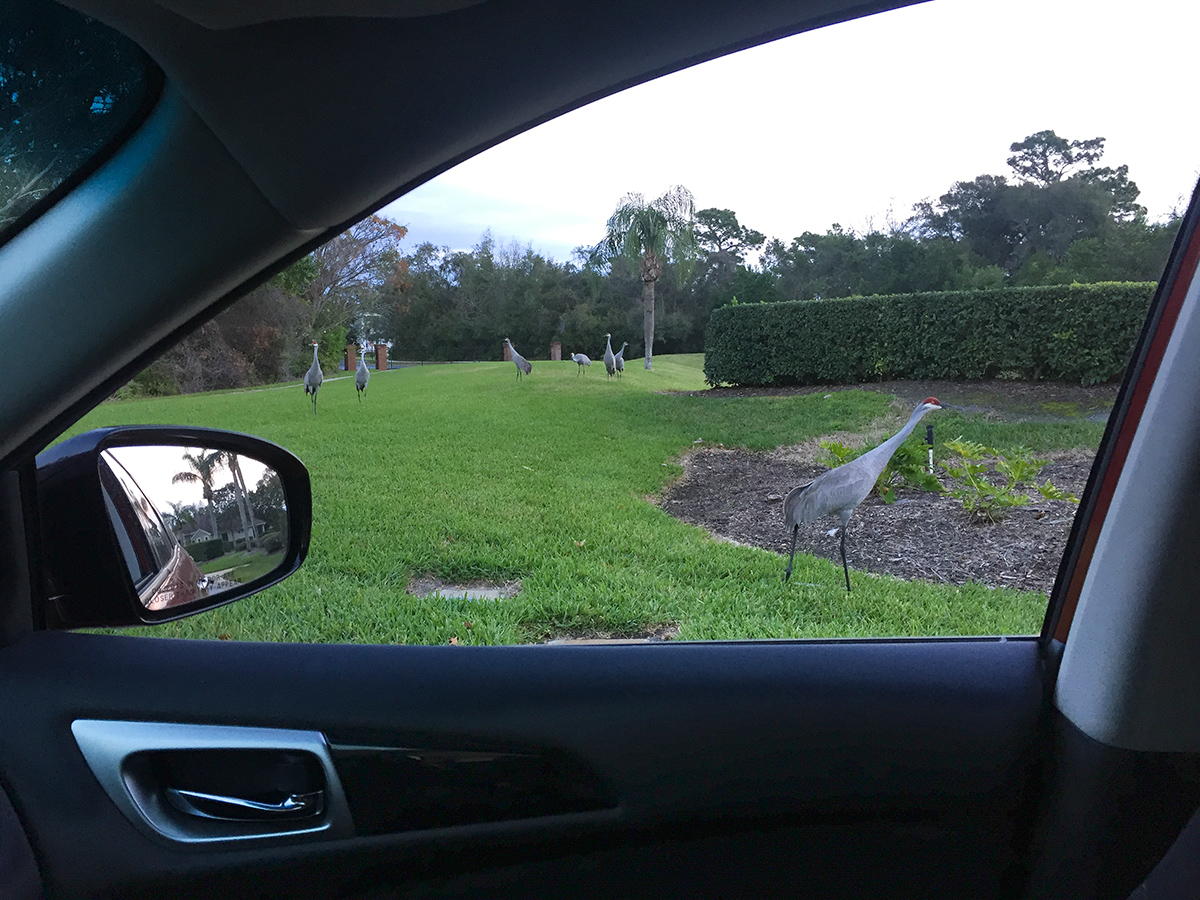
Aramidae (Limpkin)
Limpkin Aramus guarauna is the sole member of Aramidae. It looks like a large rail or heron but is most closely related to cranes. The species ranges from Florida to Argentina. At Gemini Springs I found a Limpkin feeding with American White Ibis Eudocimus albus.
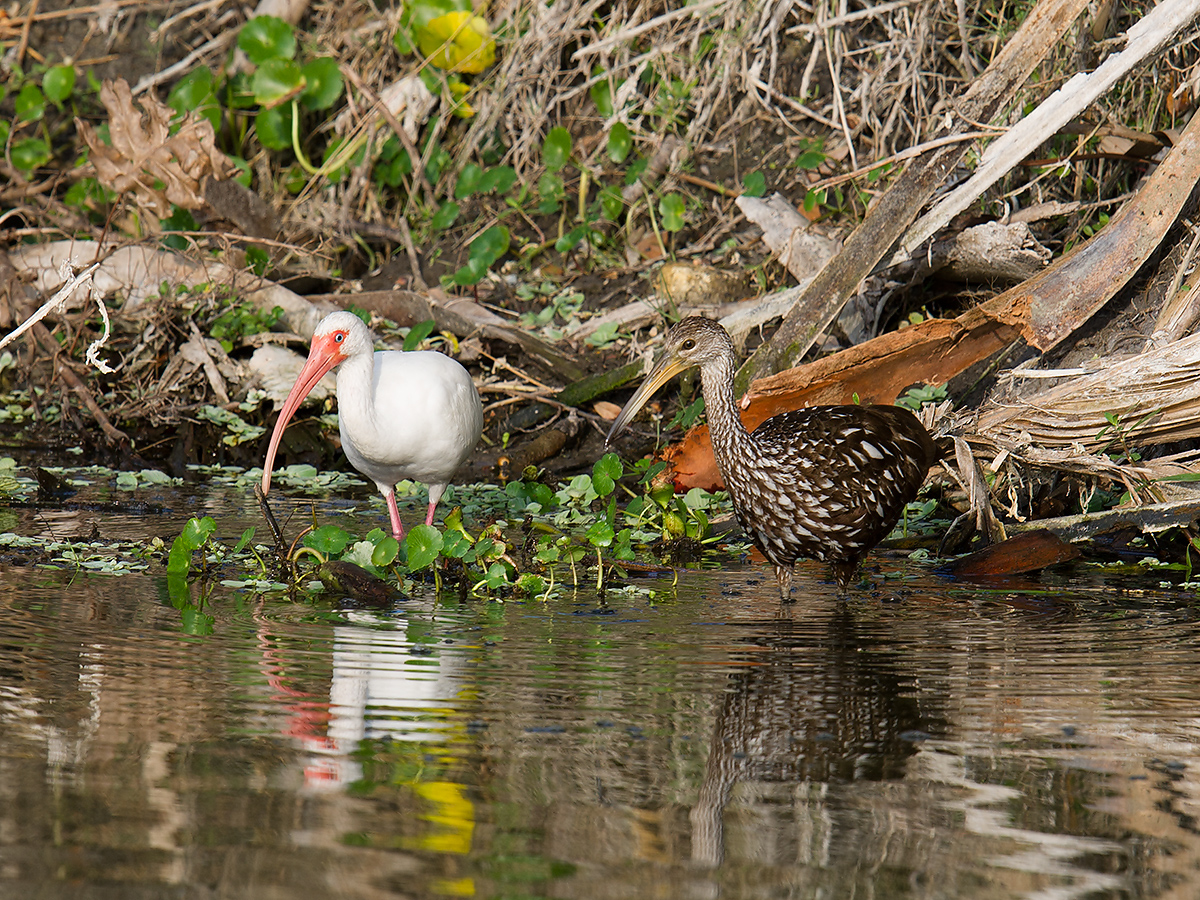
Strigidae (Owls)
Barred Owl Strix varia is an owl of dense forests. It is common, and its hoot is well-known. Strix is a large genus and includes China’s Himalayan Owl S. nivicolum.
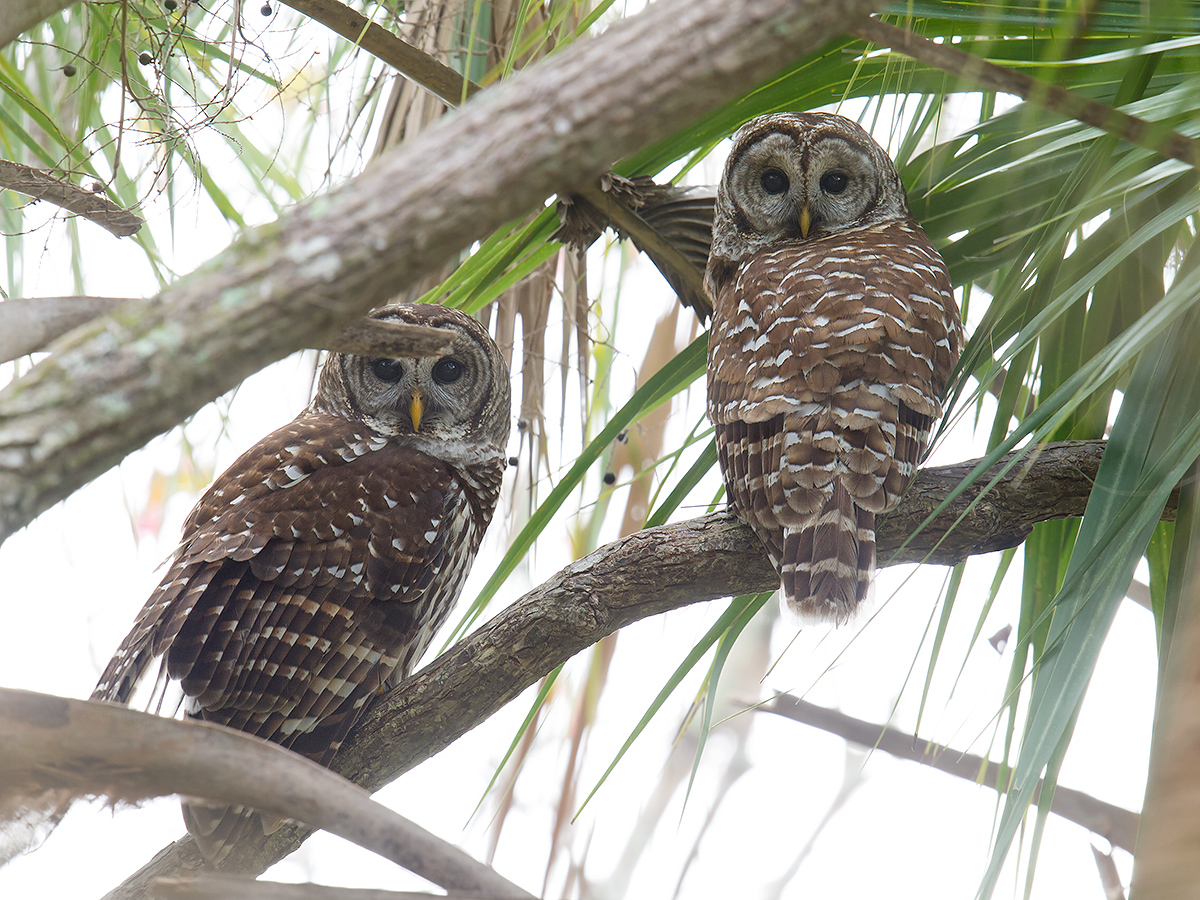
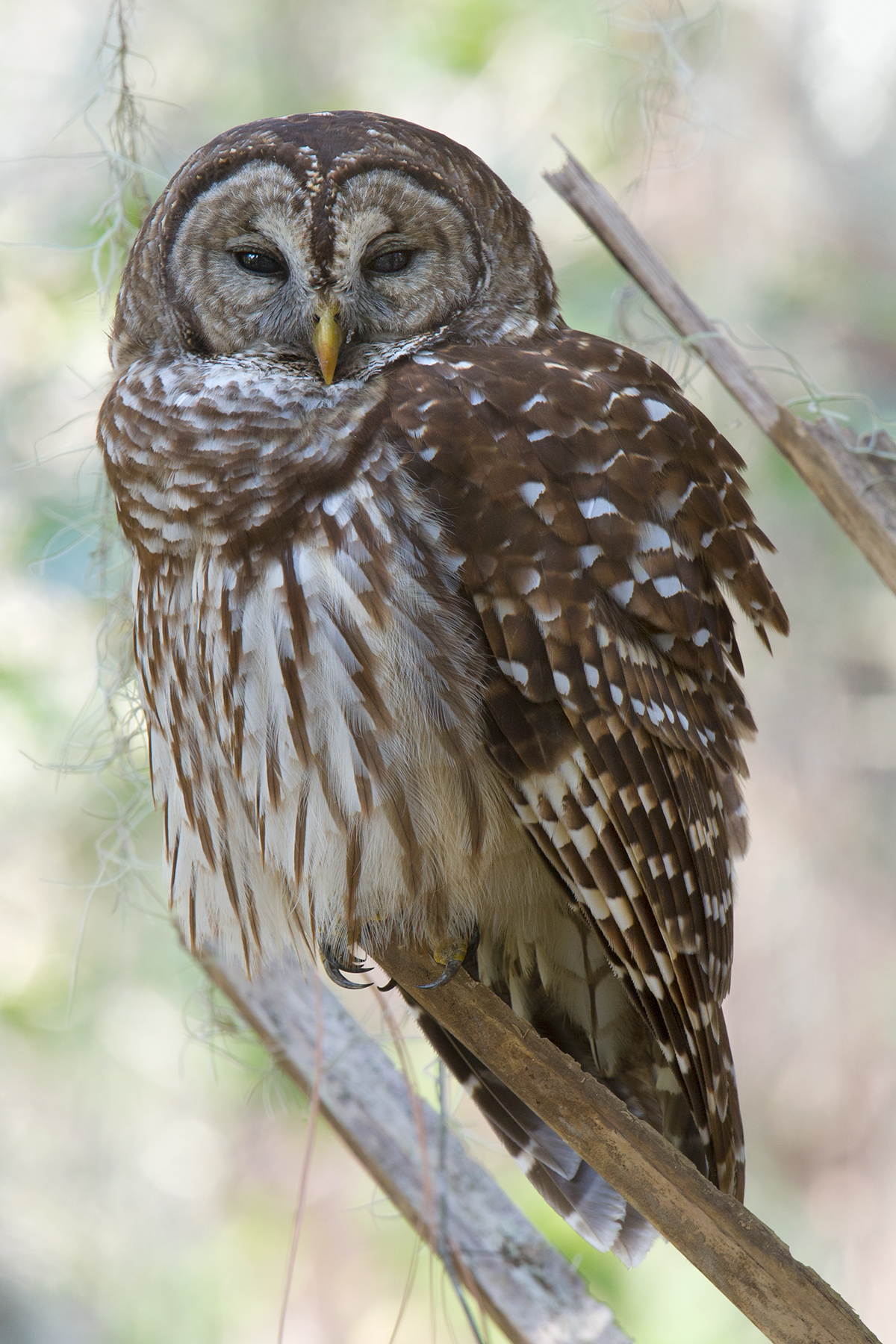
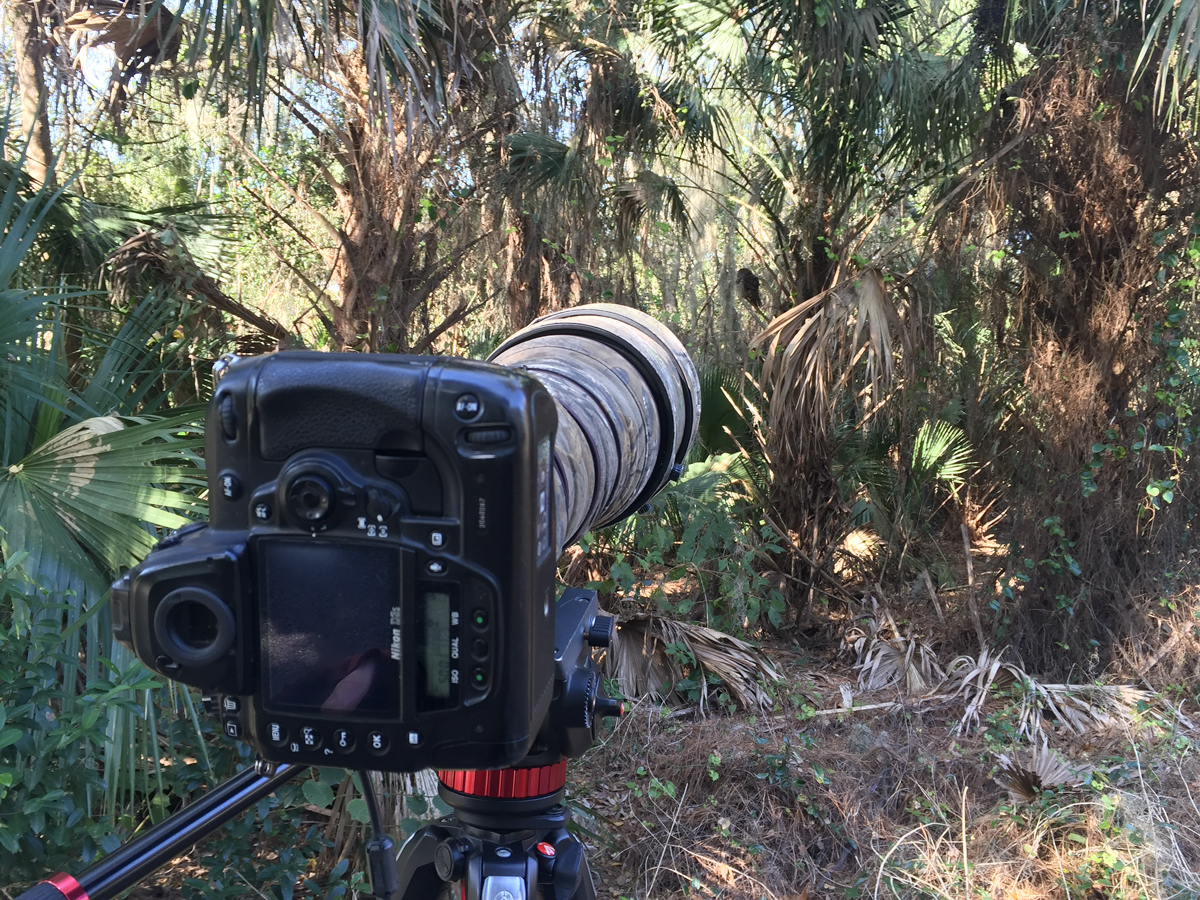
Picidae (Woodpeckers)
Pileated Woodpecker Dryocopus pileatus is part of a genus of large, powerful woodpeckers that includes Eurasia’s Black Woodpecker D. martius. Pileated Woodpecker flourishes in dense forests with large trees, of which there are many in central Florida.
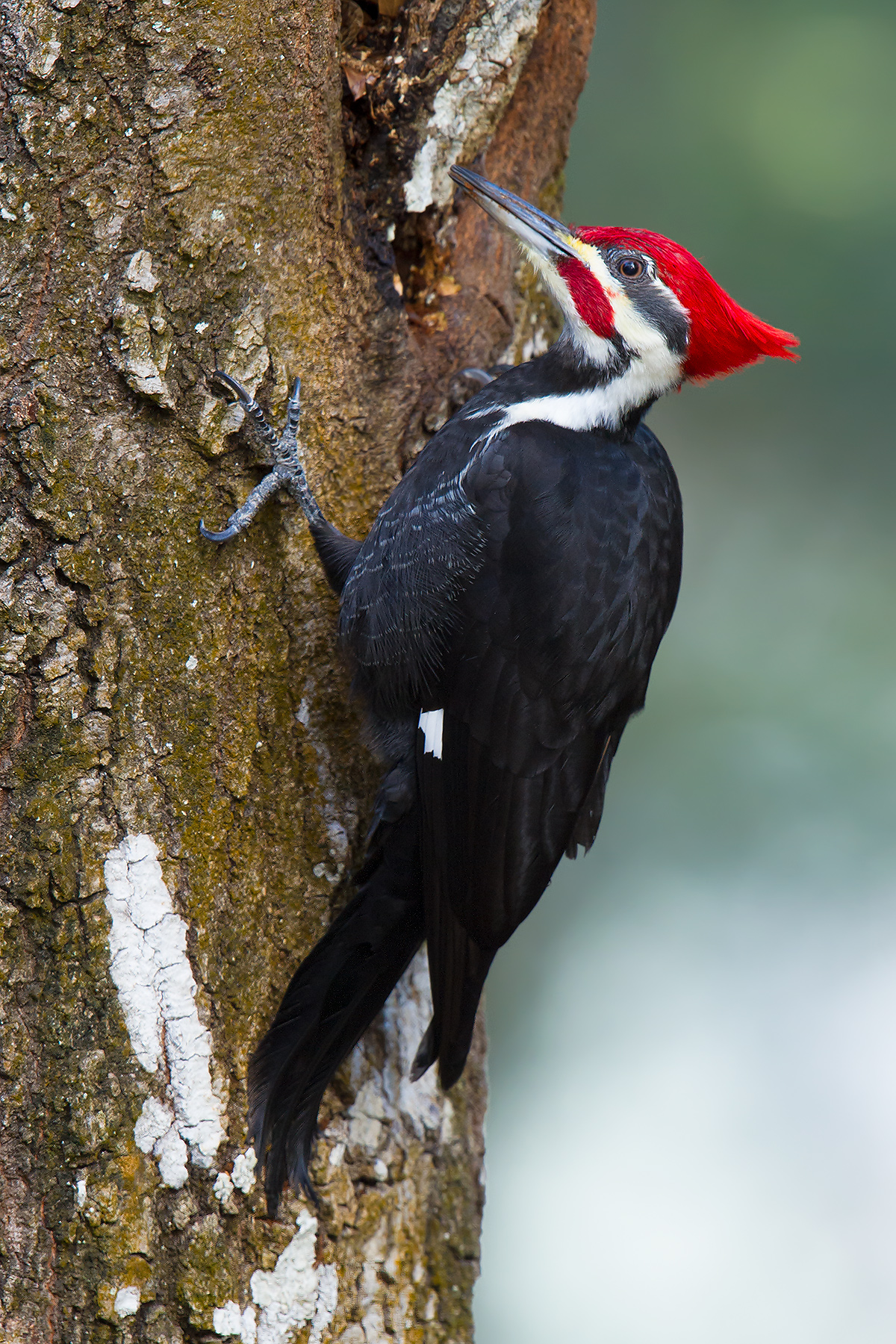
This is Red-bellied Woodpecker Melanerpes carolinus. Melanerpes contains 24 species, all in the Americas.
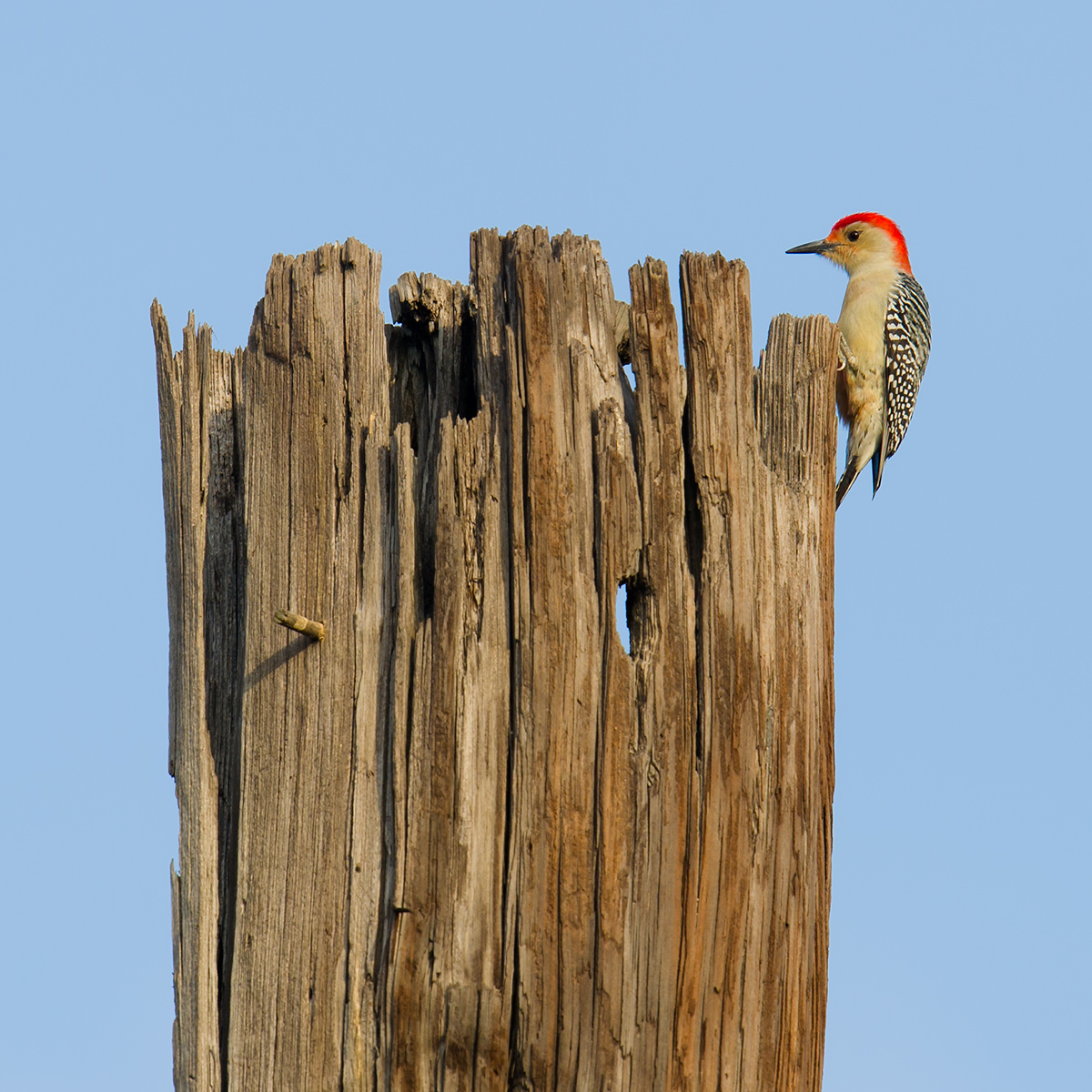
Vireonidae (Vireos)
Vireonidae is a group of small to mid-sized passerines. Most live in the New World. White-bellied Erpornis and the shrike-babblers occur in China. In recent days in Florida I have found White-eyed Vireo Vireo griseus and Blue-headed Vireo V. solitarius.
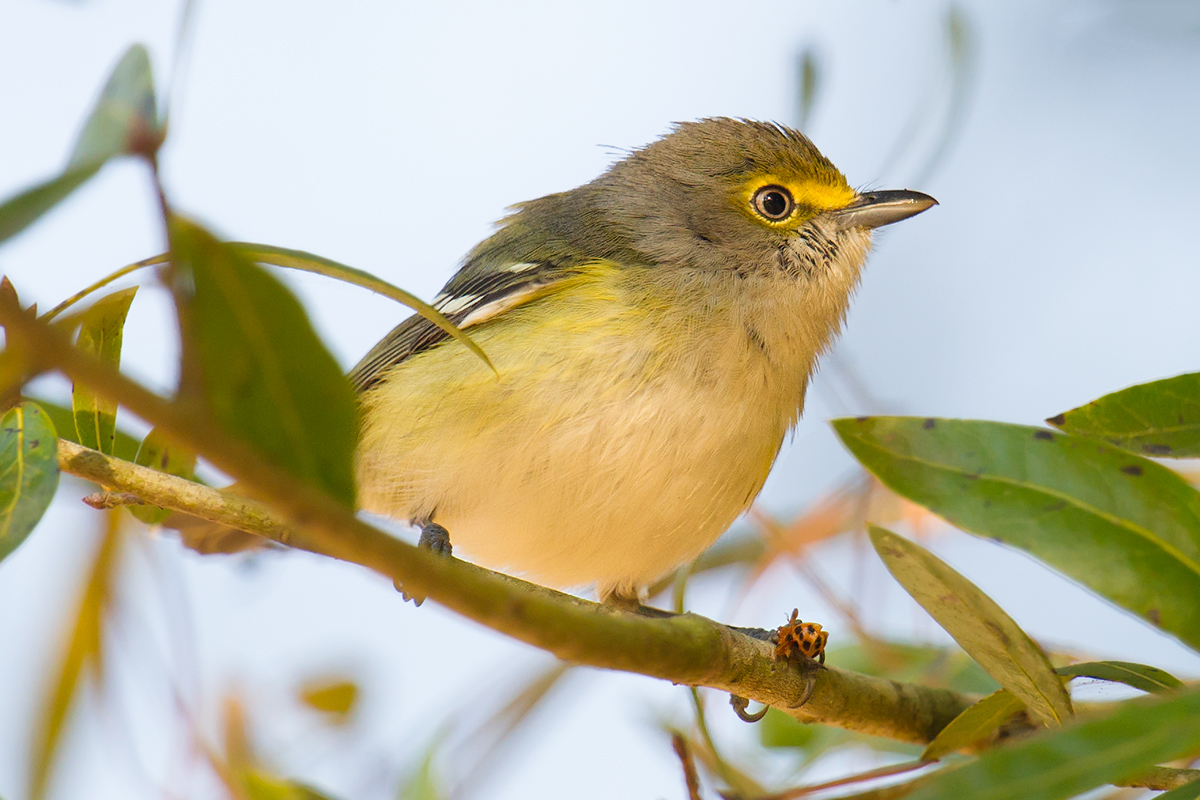
Regulidae (Goldcrests, Kinglets)
All six members of Regulidae are in a single genus, Regulus. Goldcrest Regulus regulus can be found in winter and on migration in Shanghai. North America has the very similar Ruby-crowned Kinglet R. calendula.
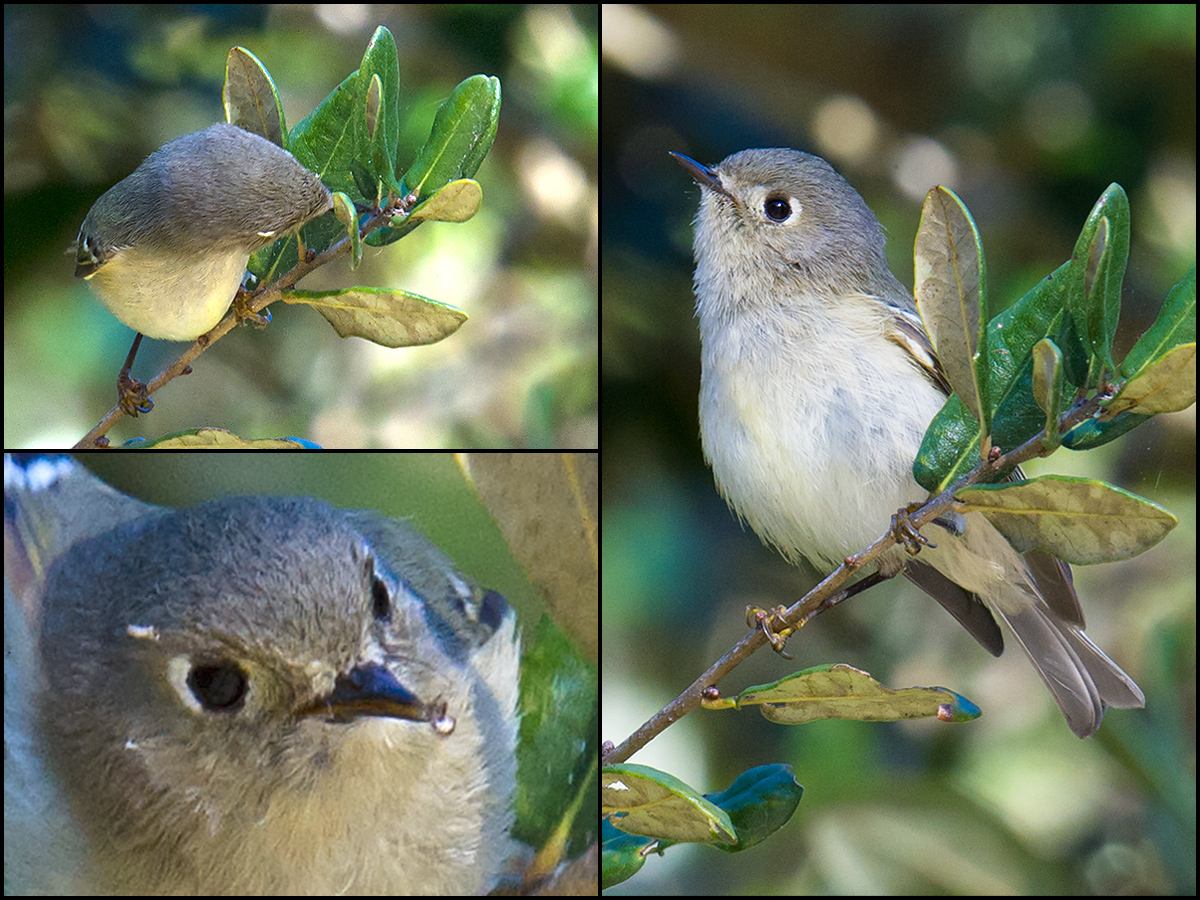
Troglodytidae (Wrens)
The sole Old World representative of Troglodytidae is Eurasian Wren Troglodytes troglodytes. In Florida I have had House Wren T. aedon, Marsh Wren Cistothorus palustris, and the accomplished songster Carolina Wren Thryothorus ludovicianus.
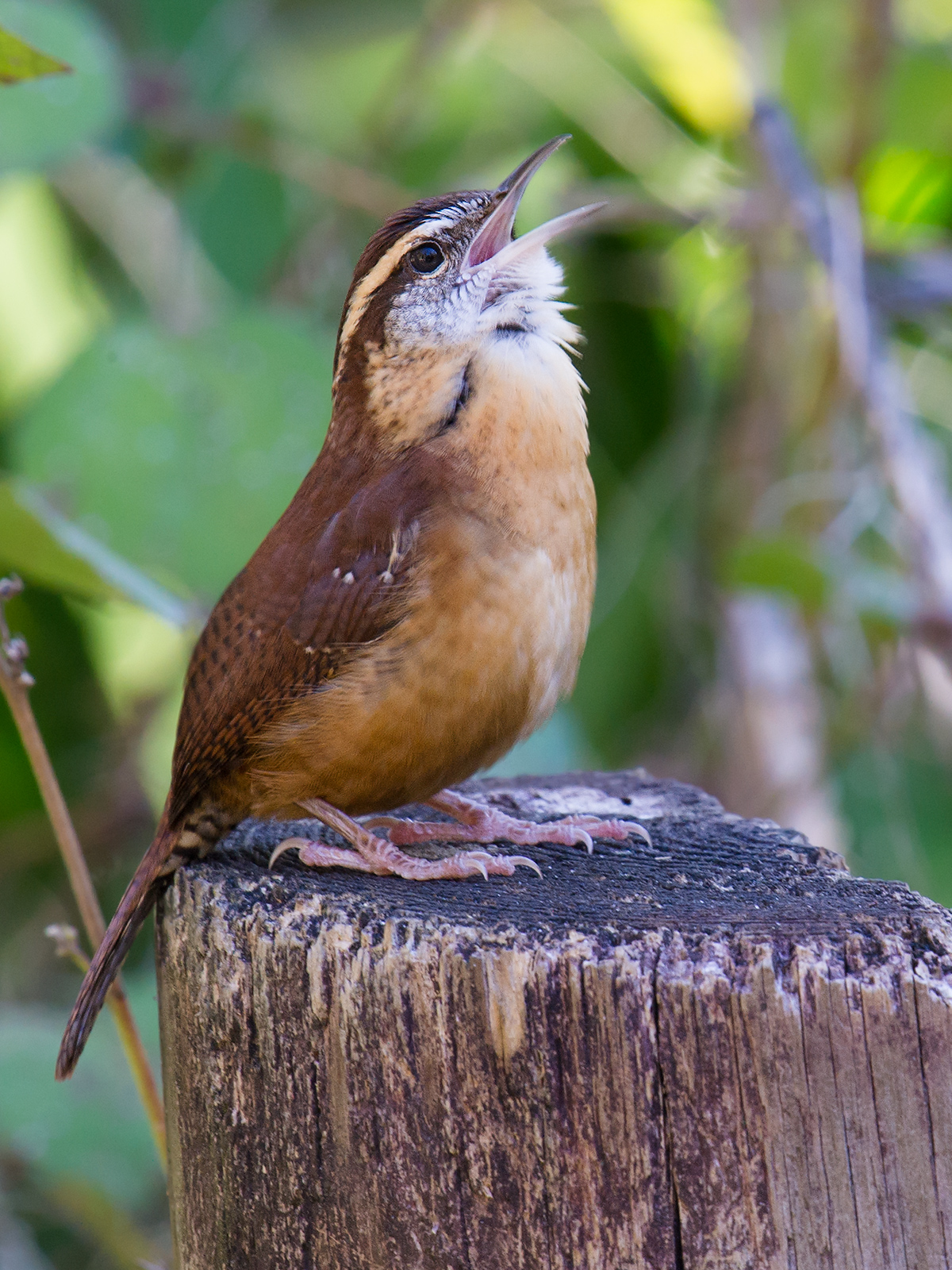
Parulidae (New World Warblers)
The New World warblers are an important passerine family confined to the New World. Most species are arboreal and insectivorous and fill niches similar to those filled in the Old World by leaf warblers. Black-and-white Warbler Mniotilta varia is the sole member of its genus. It is the only New World warbler to move up and down tree trunks in the manner of a nuthatch.
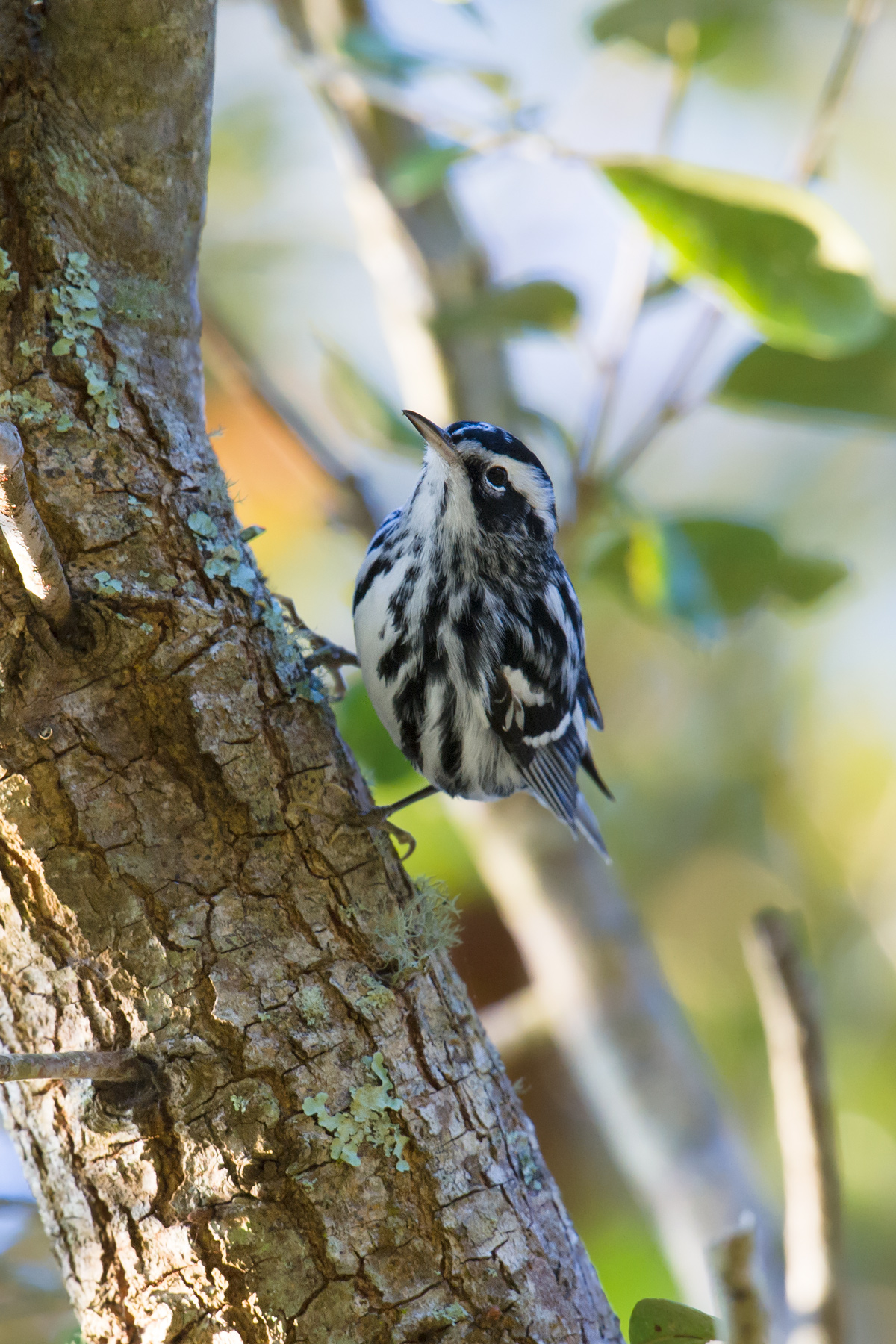
Icteridae (Icterids)
Icterids are a strictly New World family. Boat-tailed Grackle Quiscalus major lives along the U.S. coast from New York to Texas. In Florida it also occurs inland.
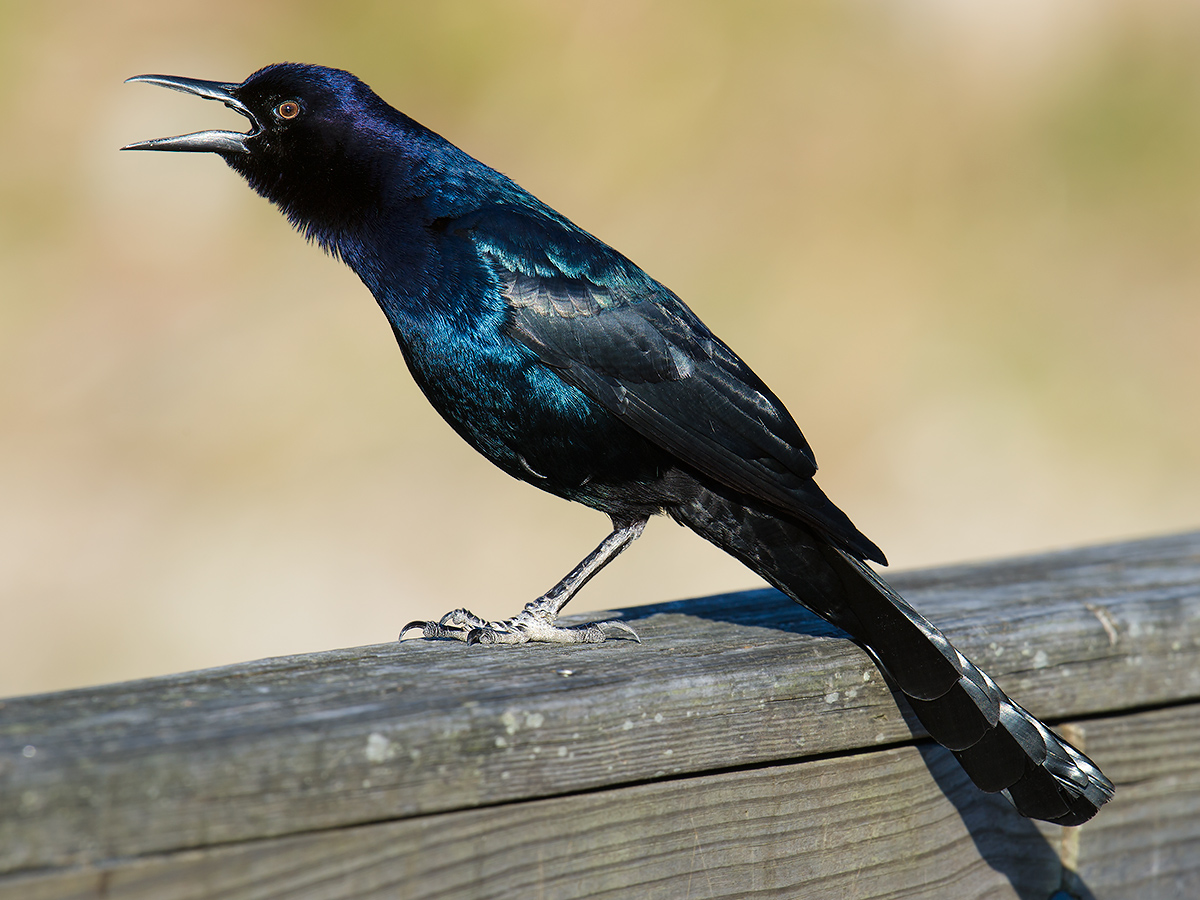
Emberizidae (Buntings and New World Sparrows)
American “sparrows” are more closely related to Old World buntings. Both groups are in Emberizidae. Savannah Sparrow Passerculus sandwichensis is a bird of open country. It breeds from Alaska through Canada and the northern Lower 48 states and is a winter visitor to Florida. Swamp Sparrow Melospiza georgiana is most at home in wetland habitats. It too is a winter visitor to Florida. It breeds in the northern U.S. and Canada.
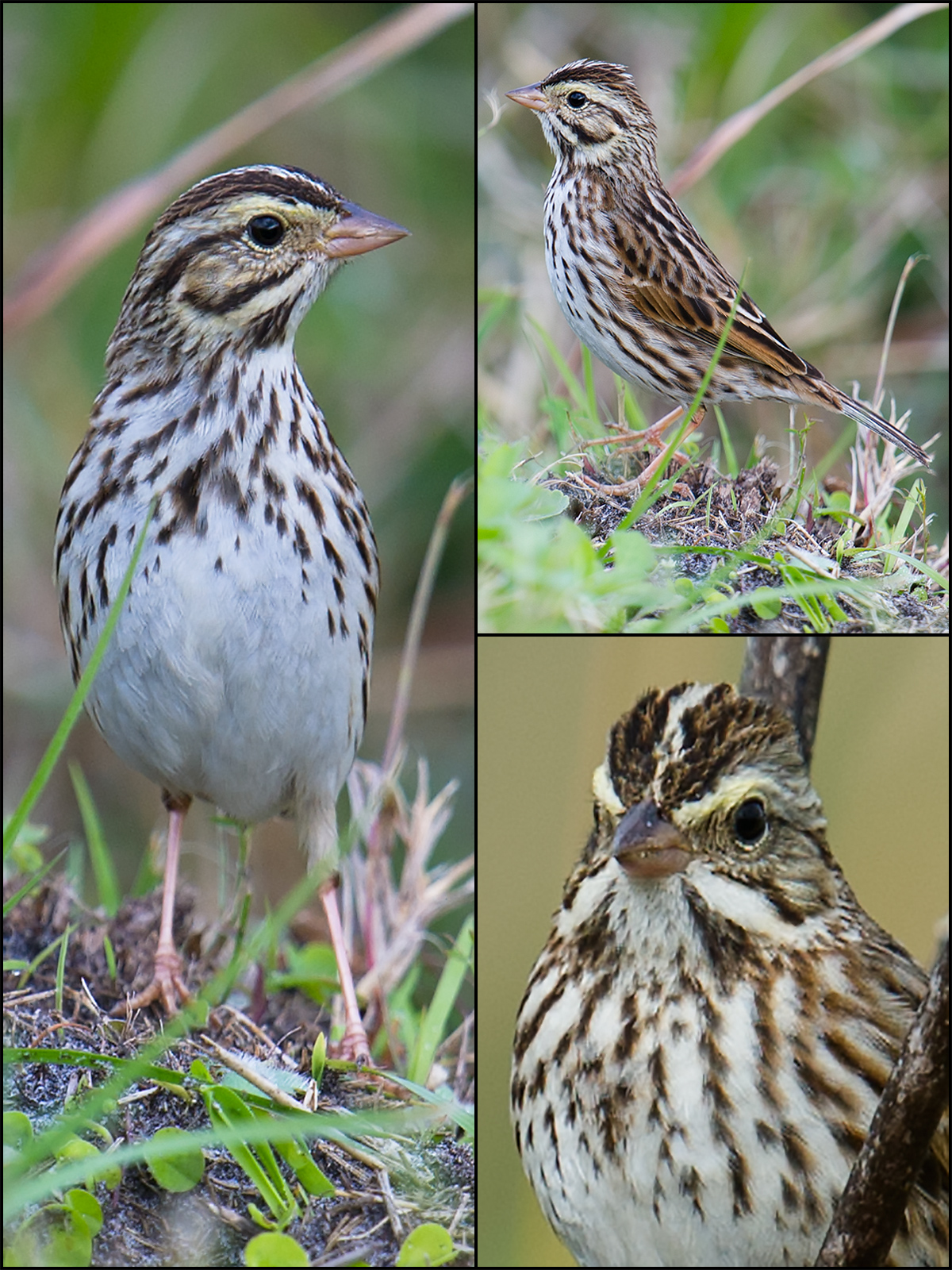
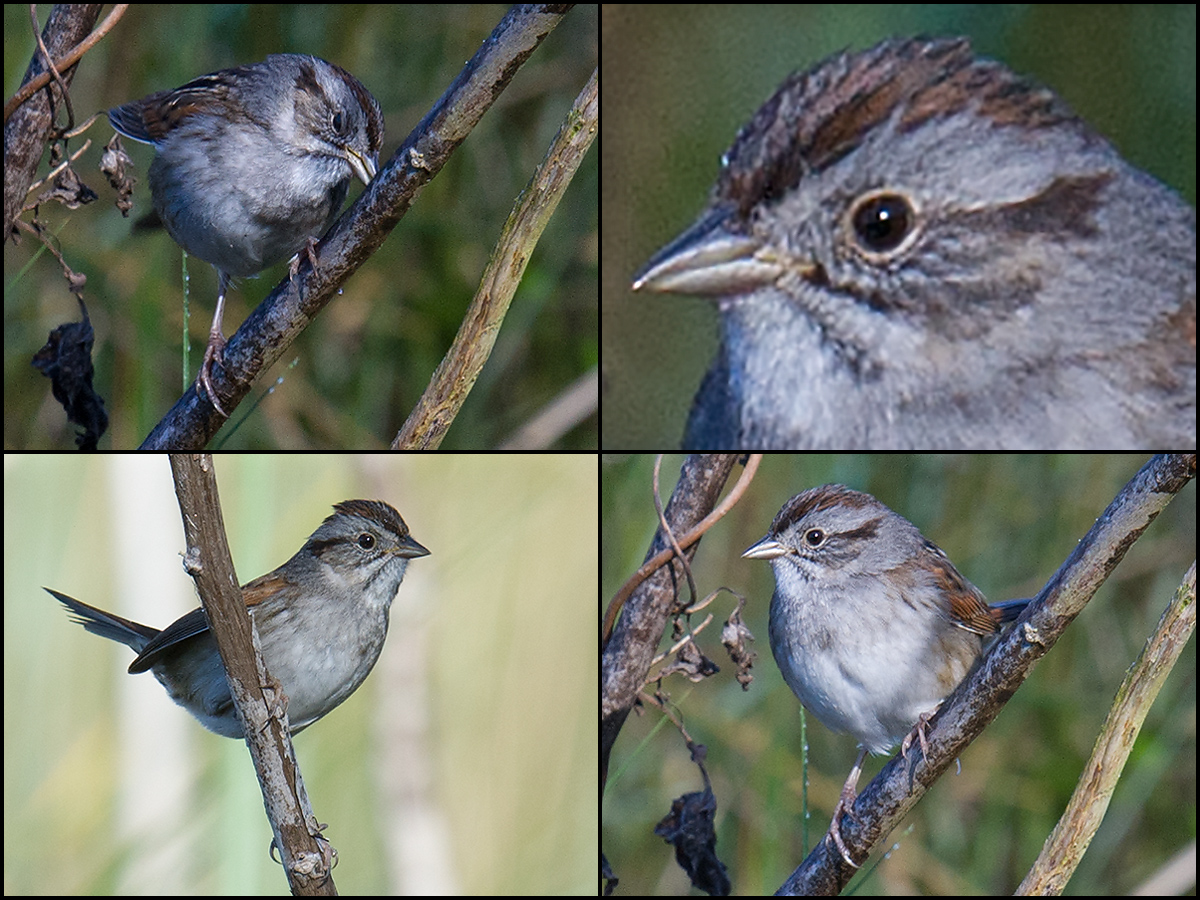
Cardinalidae (Cardinals)
Cardinalidae is a family of finch-like seed-eating birds endemic to the New World. Painted Bunting Passerina ciris is often described as the most beautiful bird in North America.
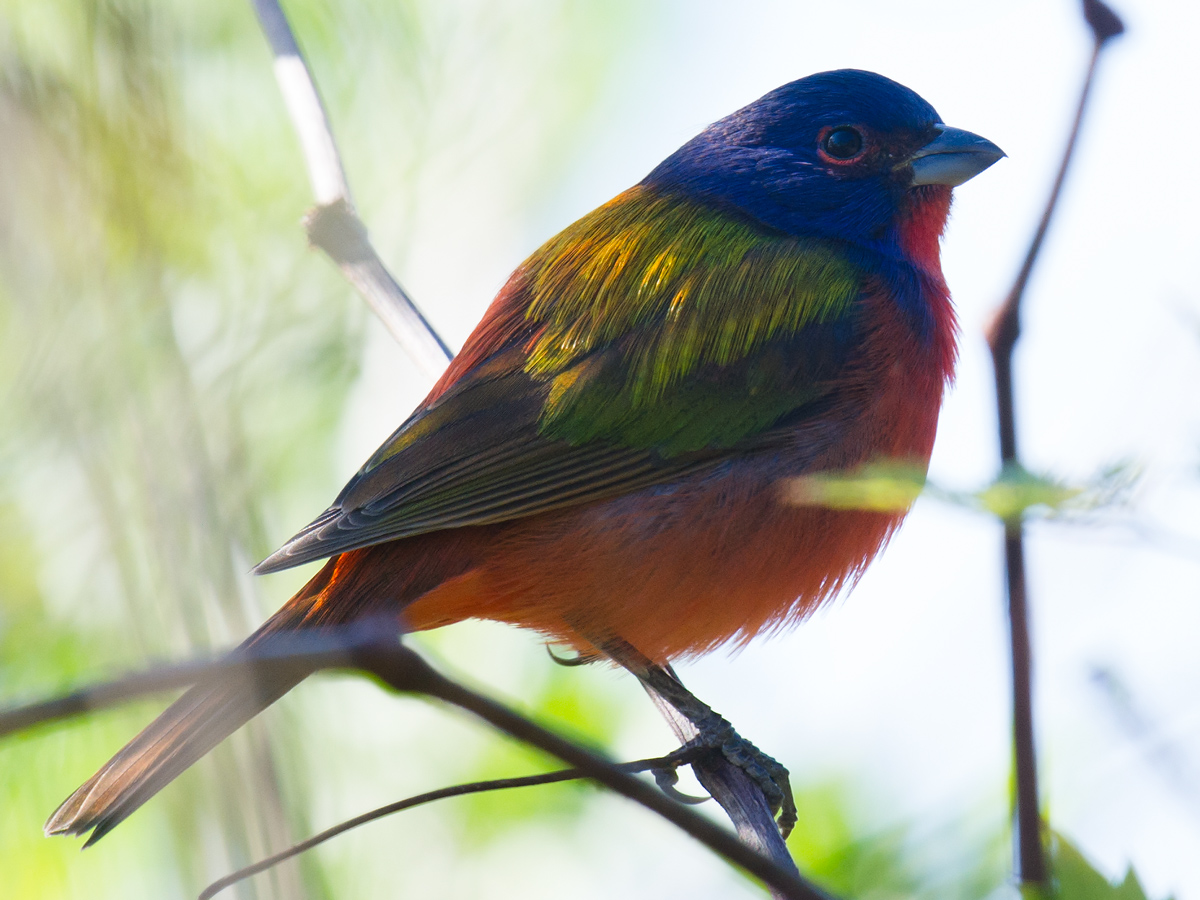
My Equipment
I use a Nikon D3S that I purchased in October 2010. The camera has been a steady performer, and I have seen no need to replace it. My lens is the Nikkor 600 mm F/4. I mount my lens and camera atop a Manfrotto MT055CXPRO3 carbon fiber tripod and MVH502AH video head. I use my iPhone 6 for landscape shots.
My Day Lists
Visit my eBird profile page for access to my day lists from Florida as well as China. You will need an eBird account to view the profile.

